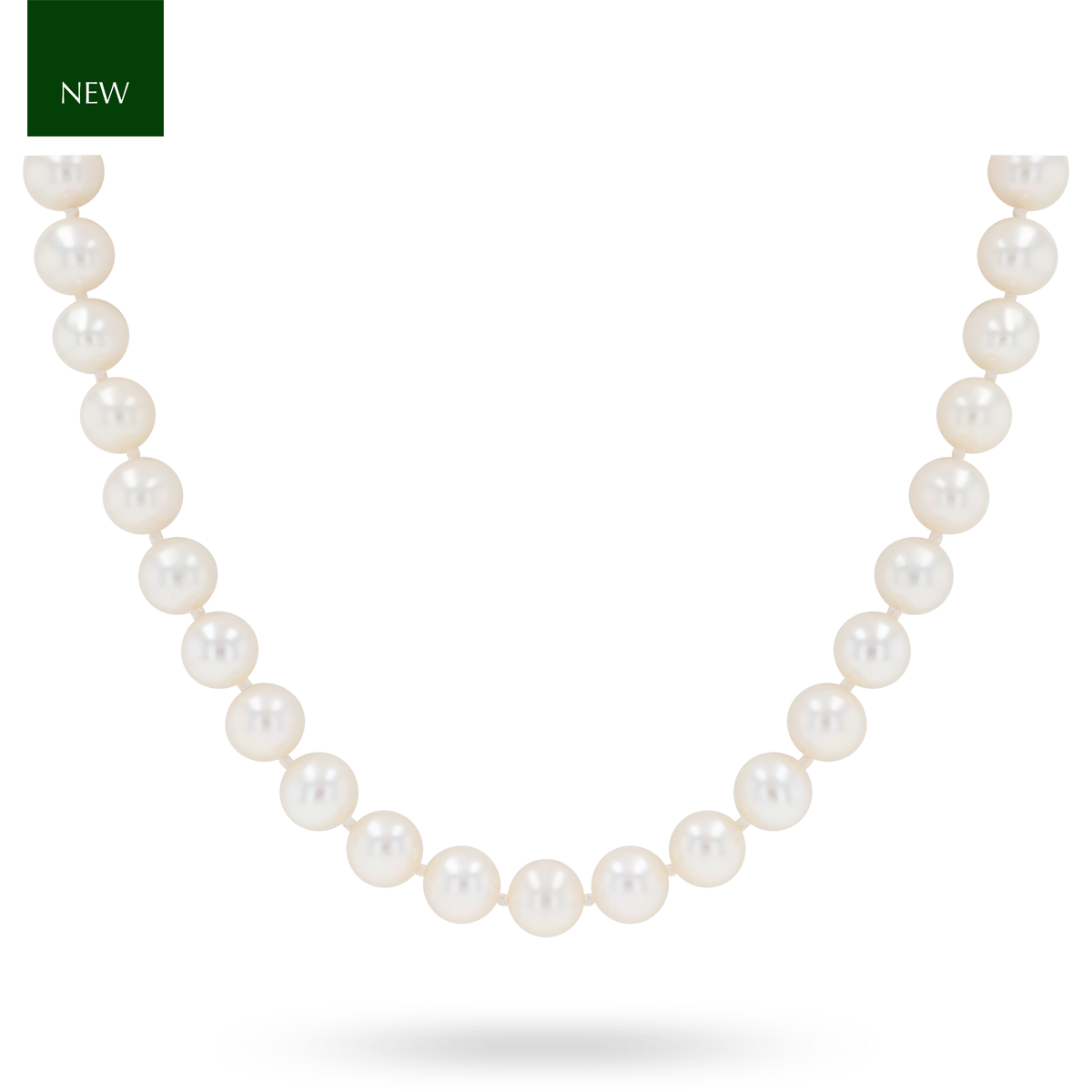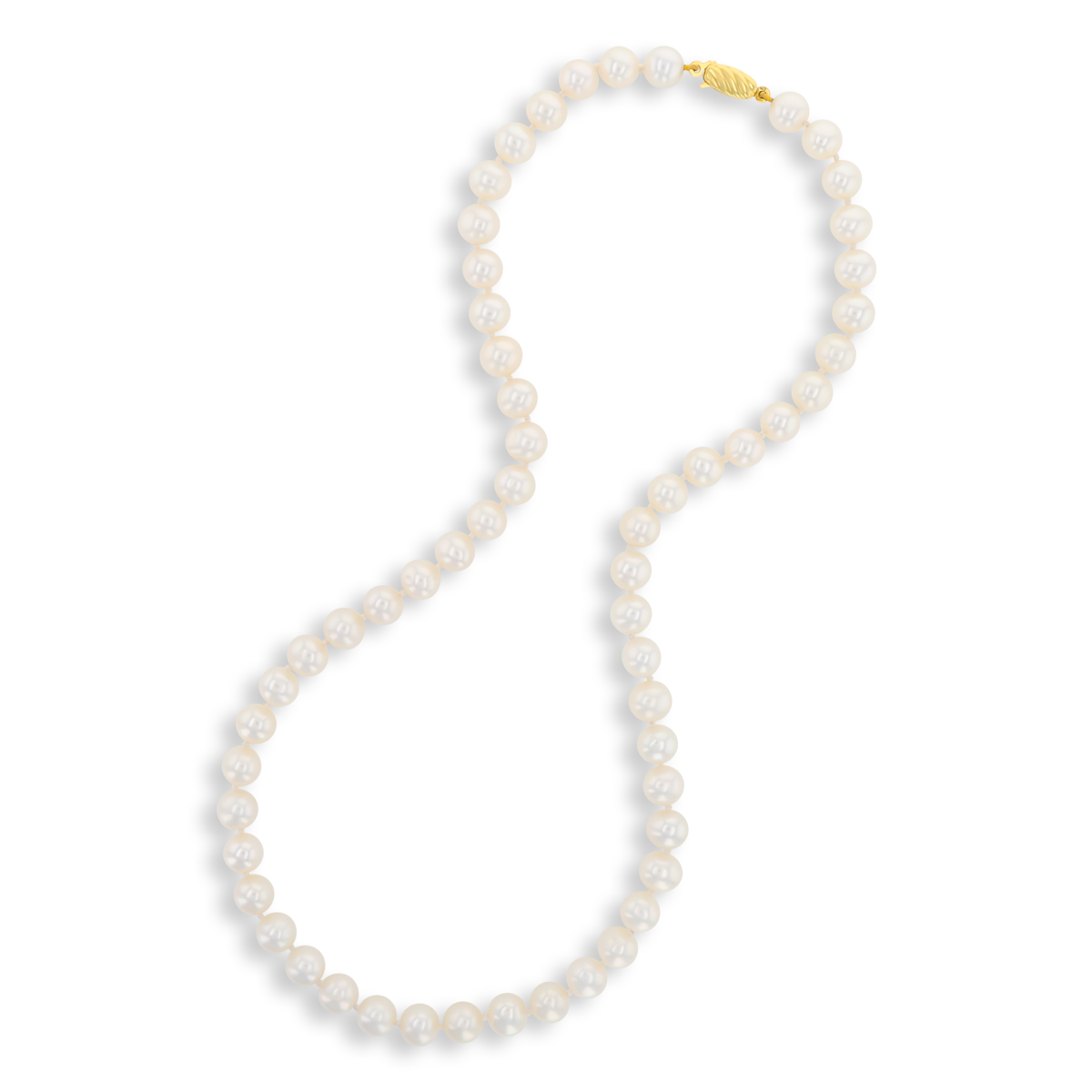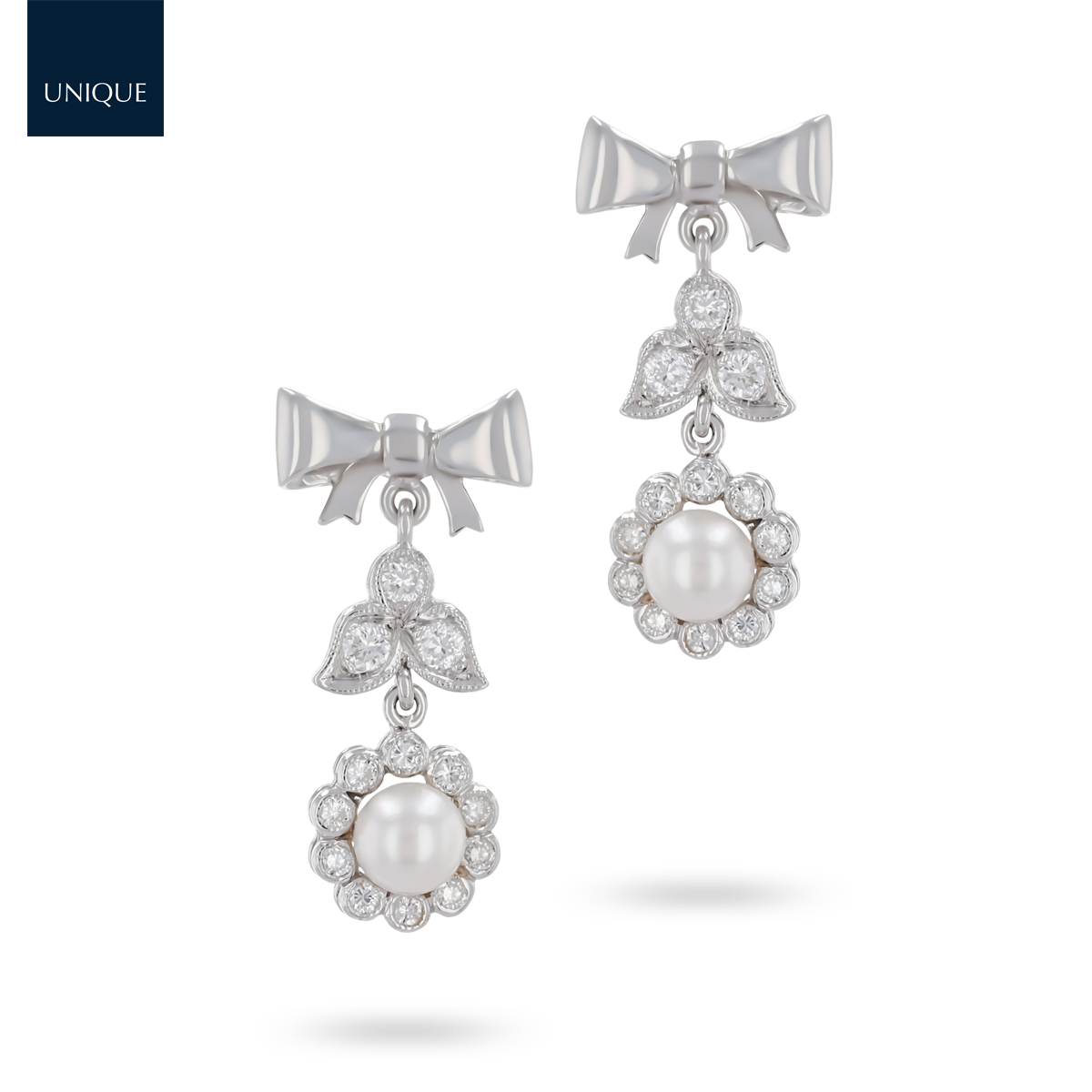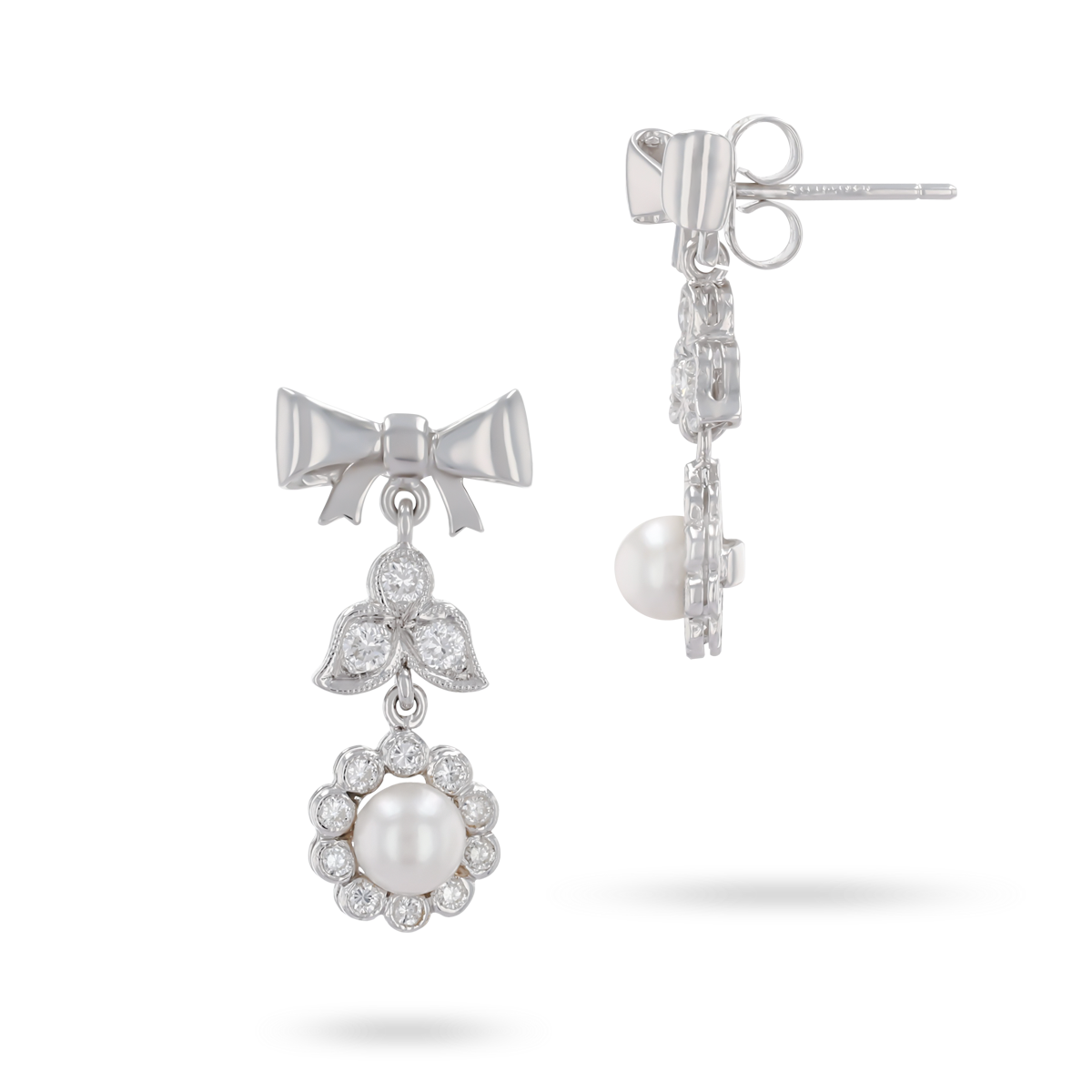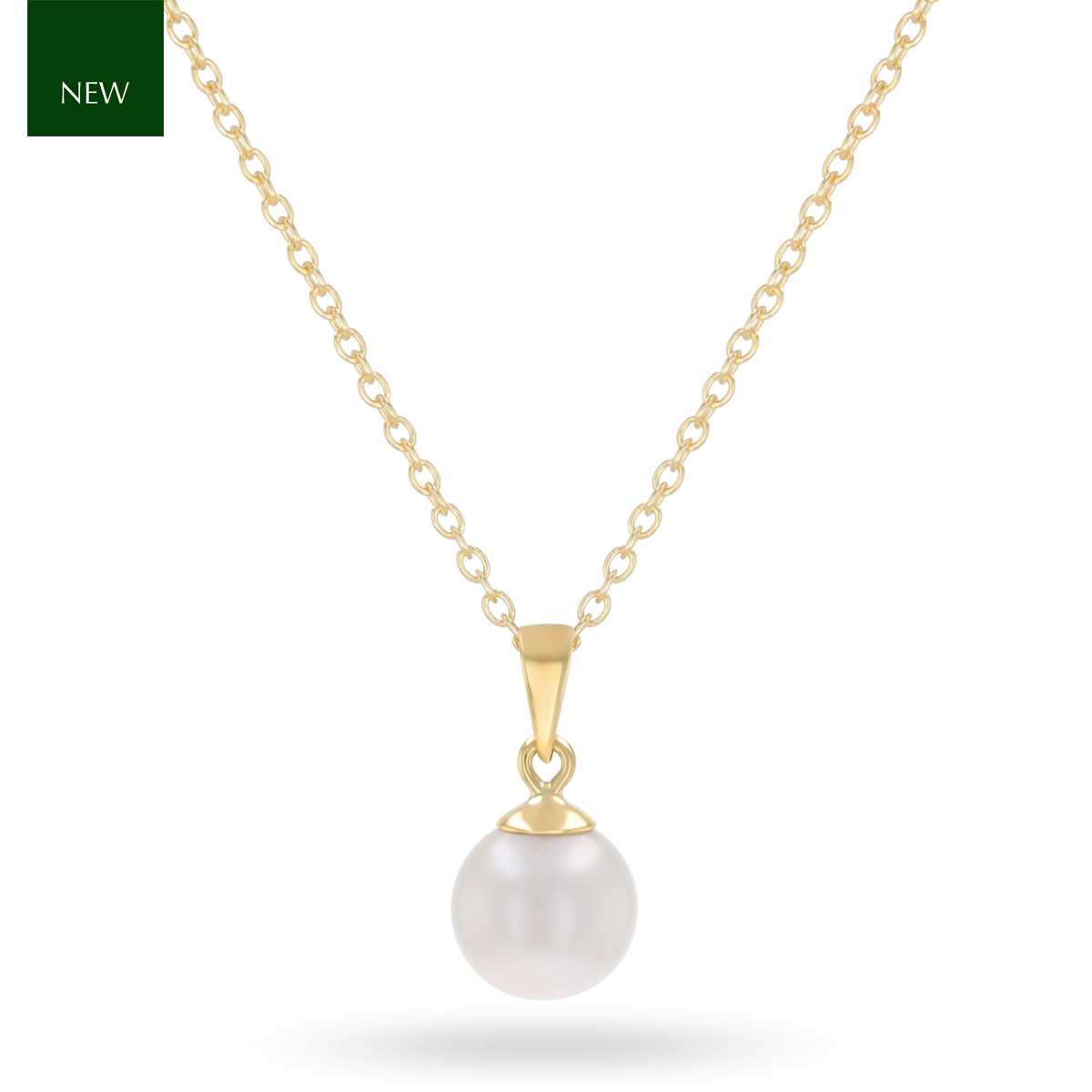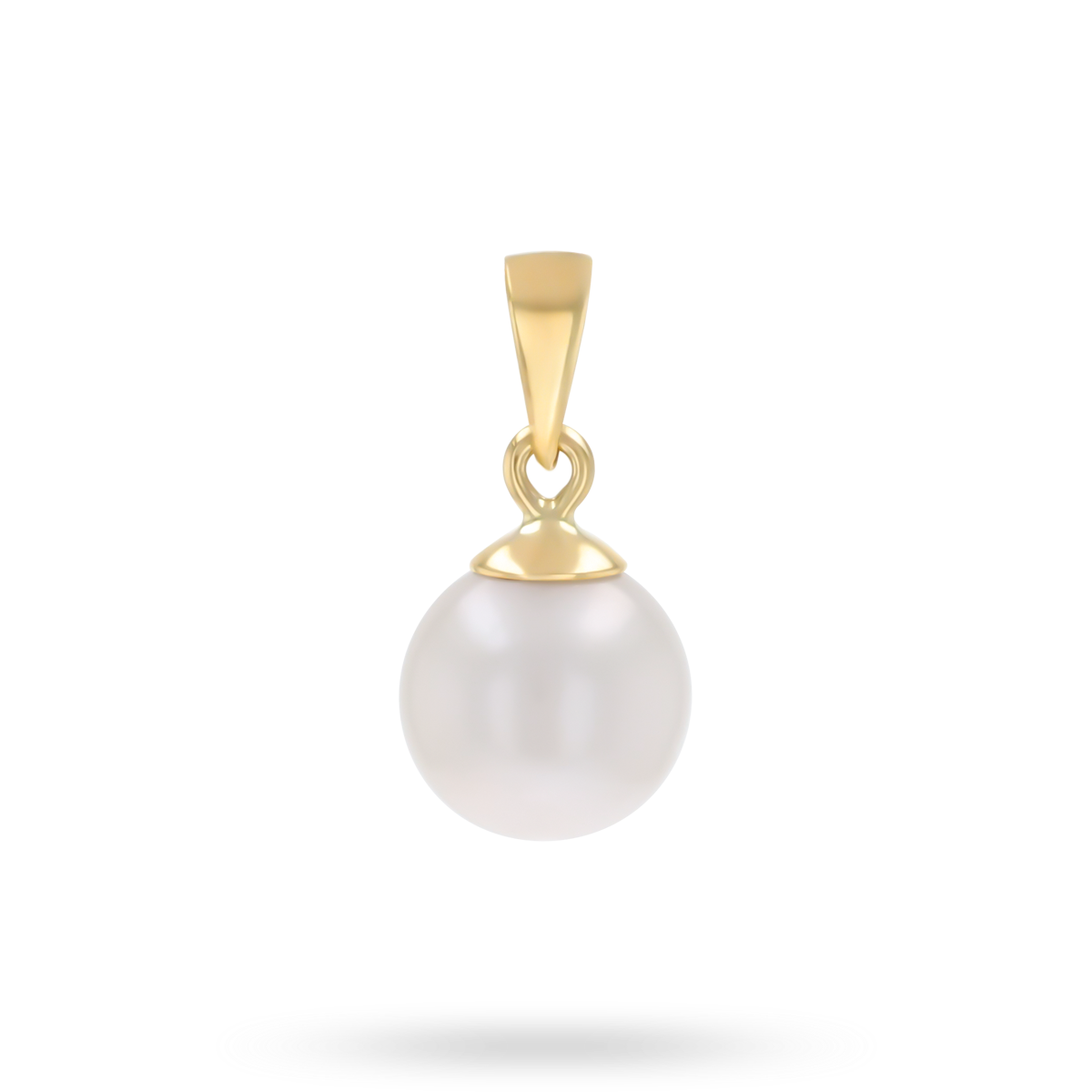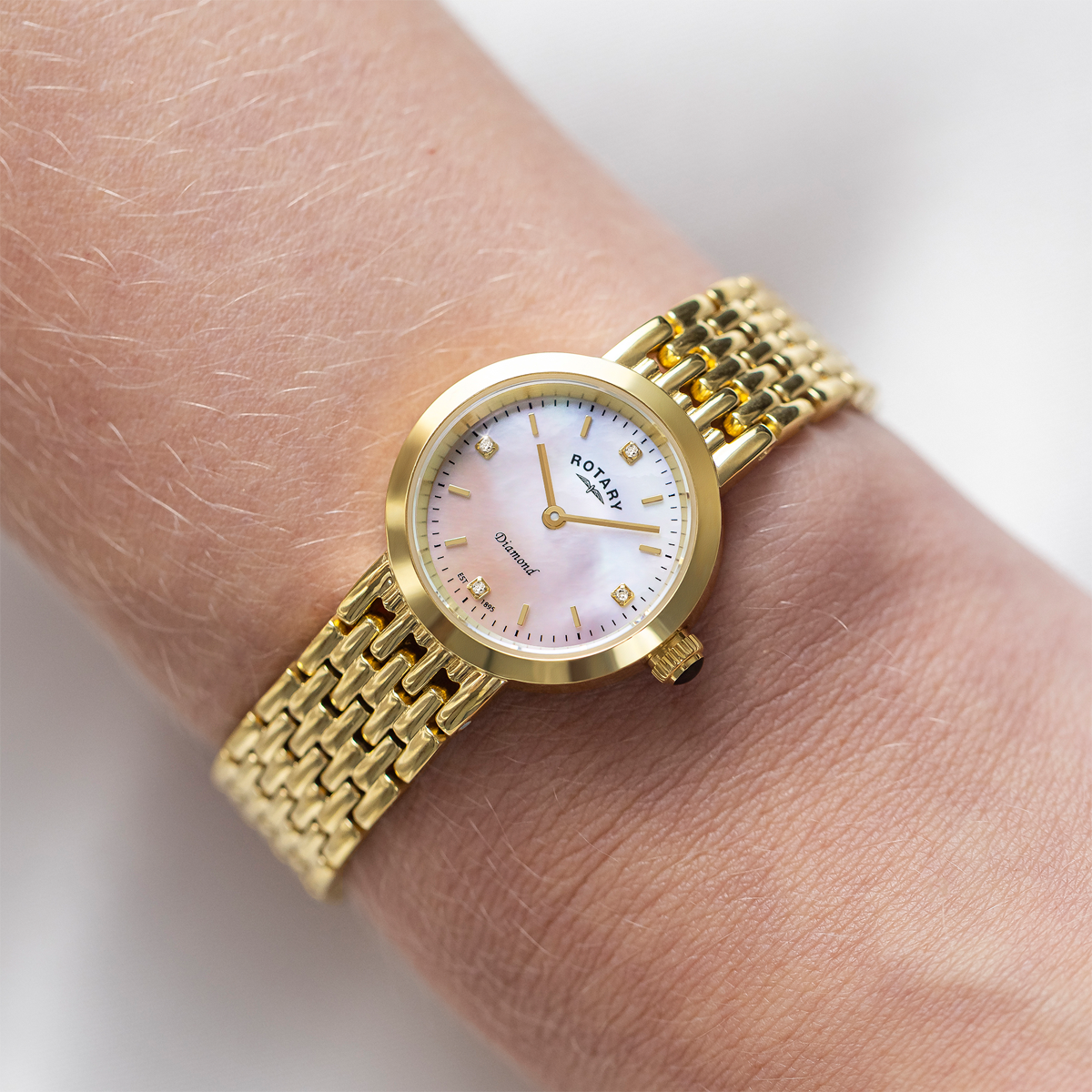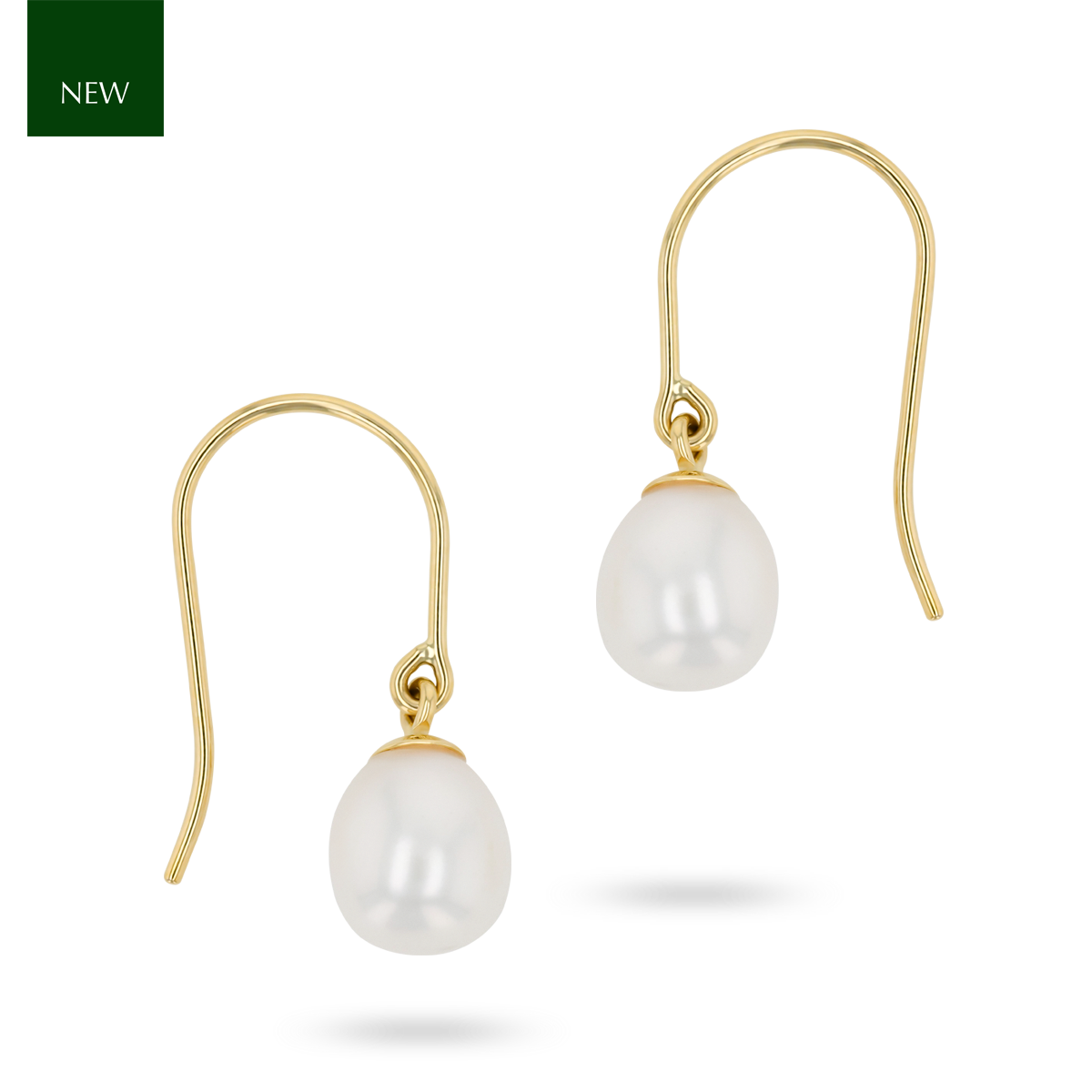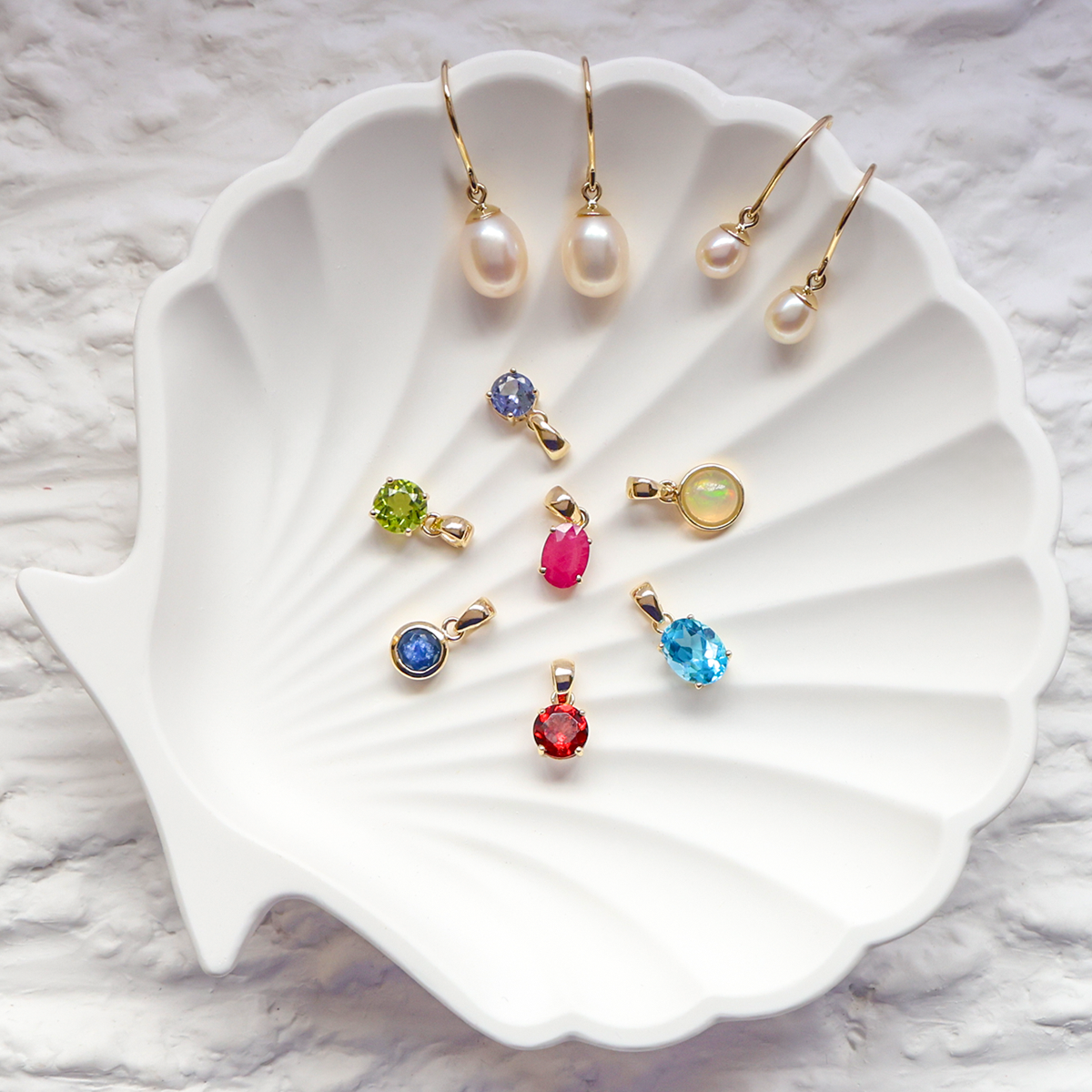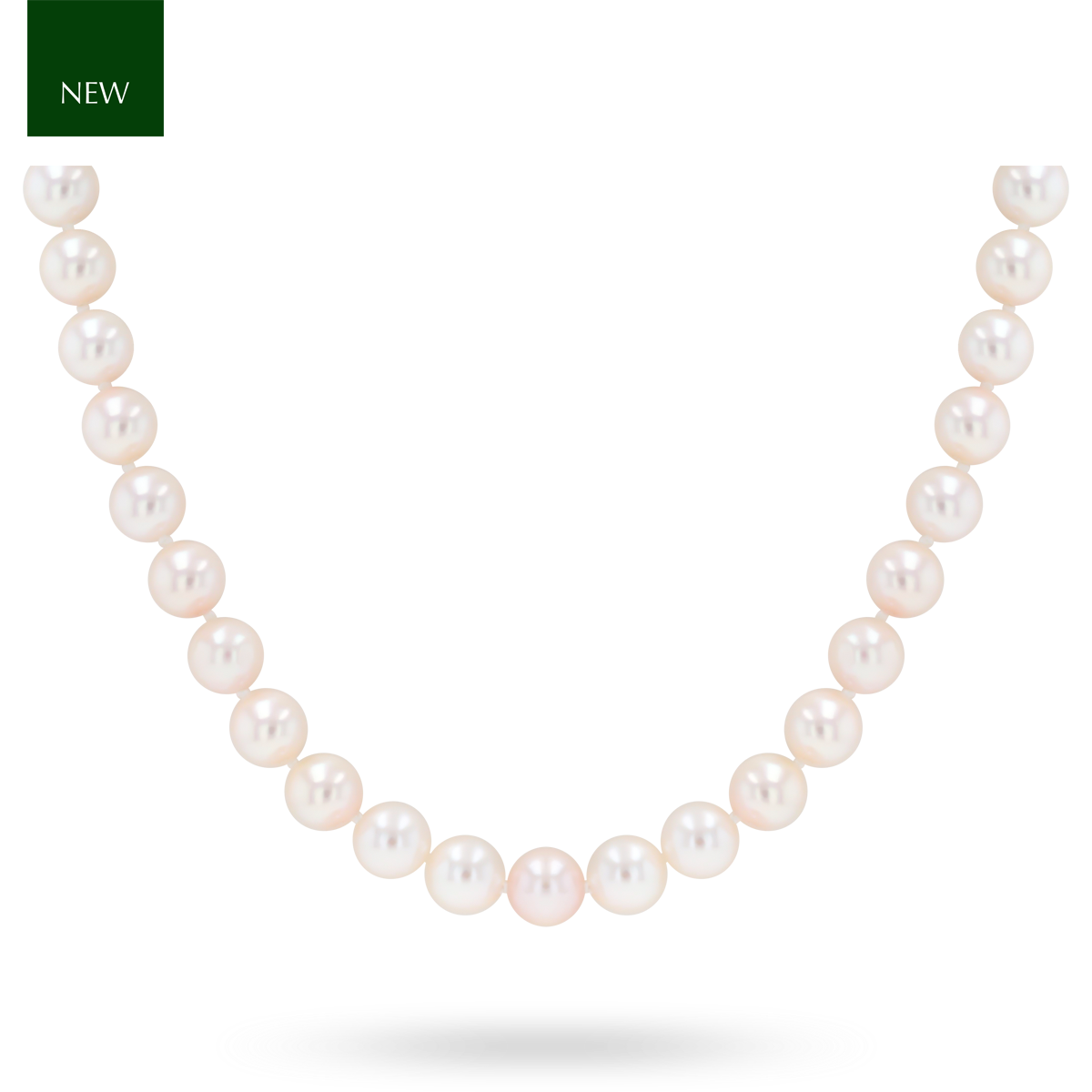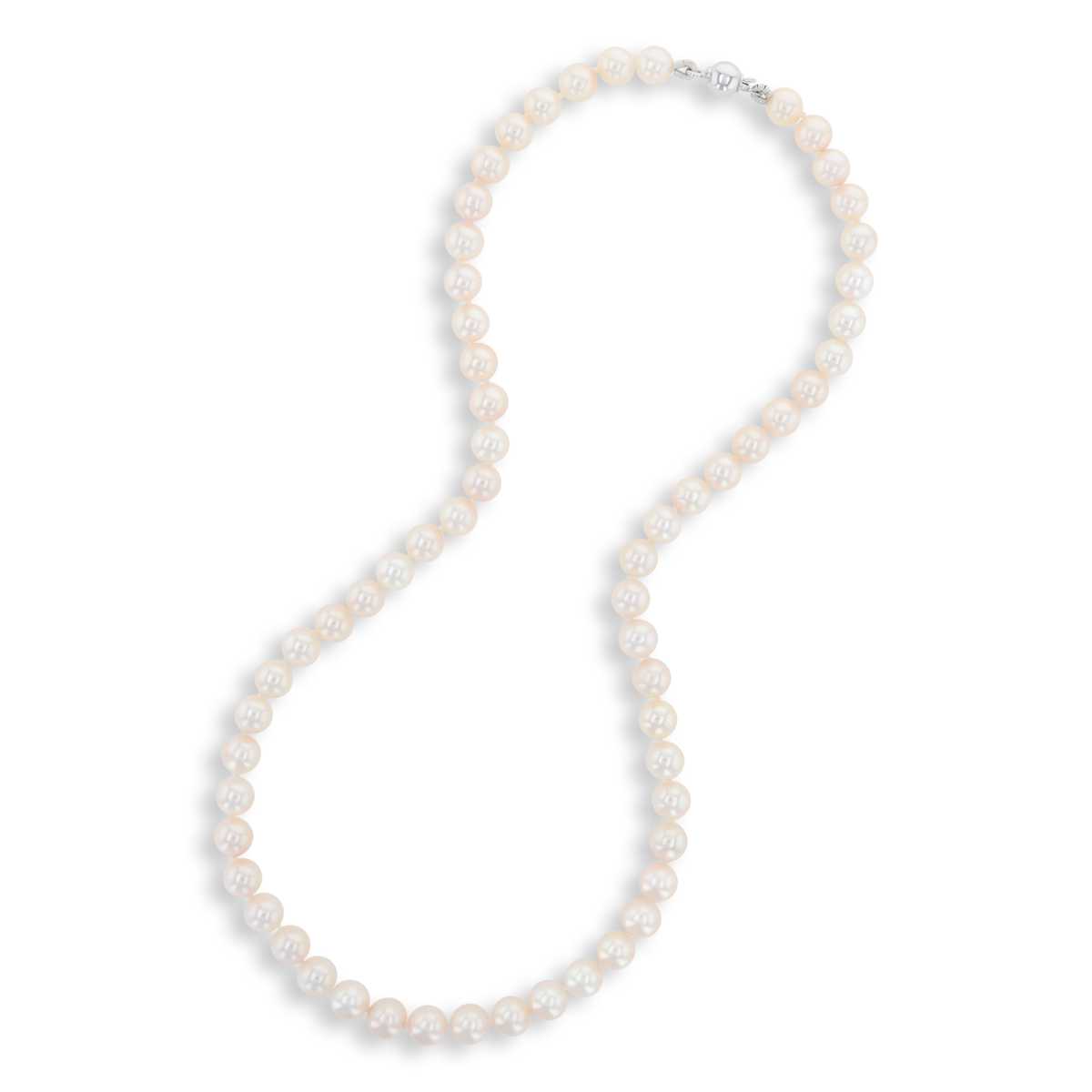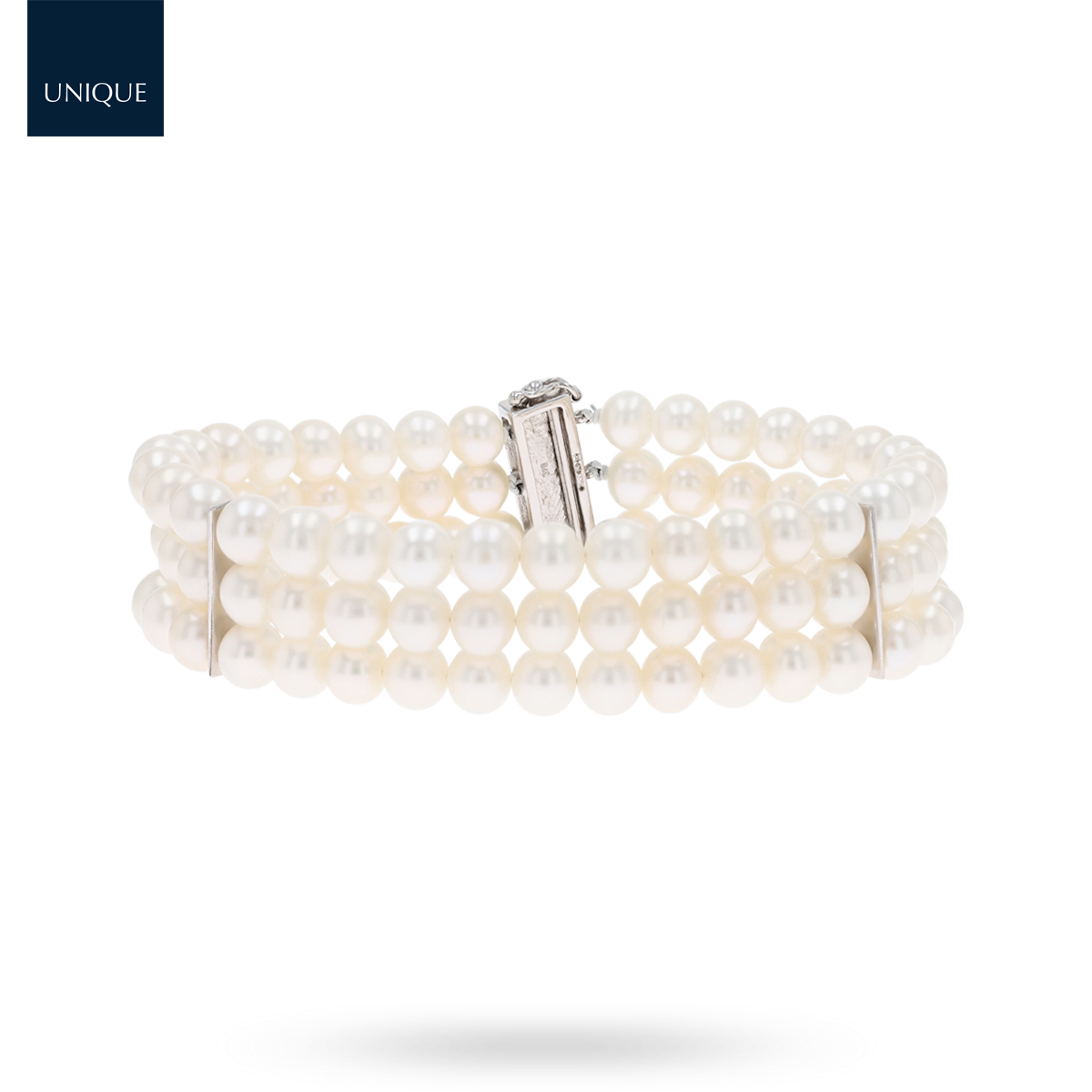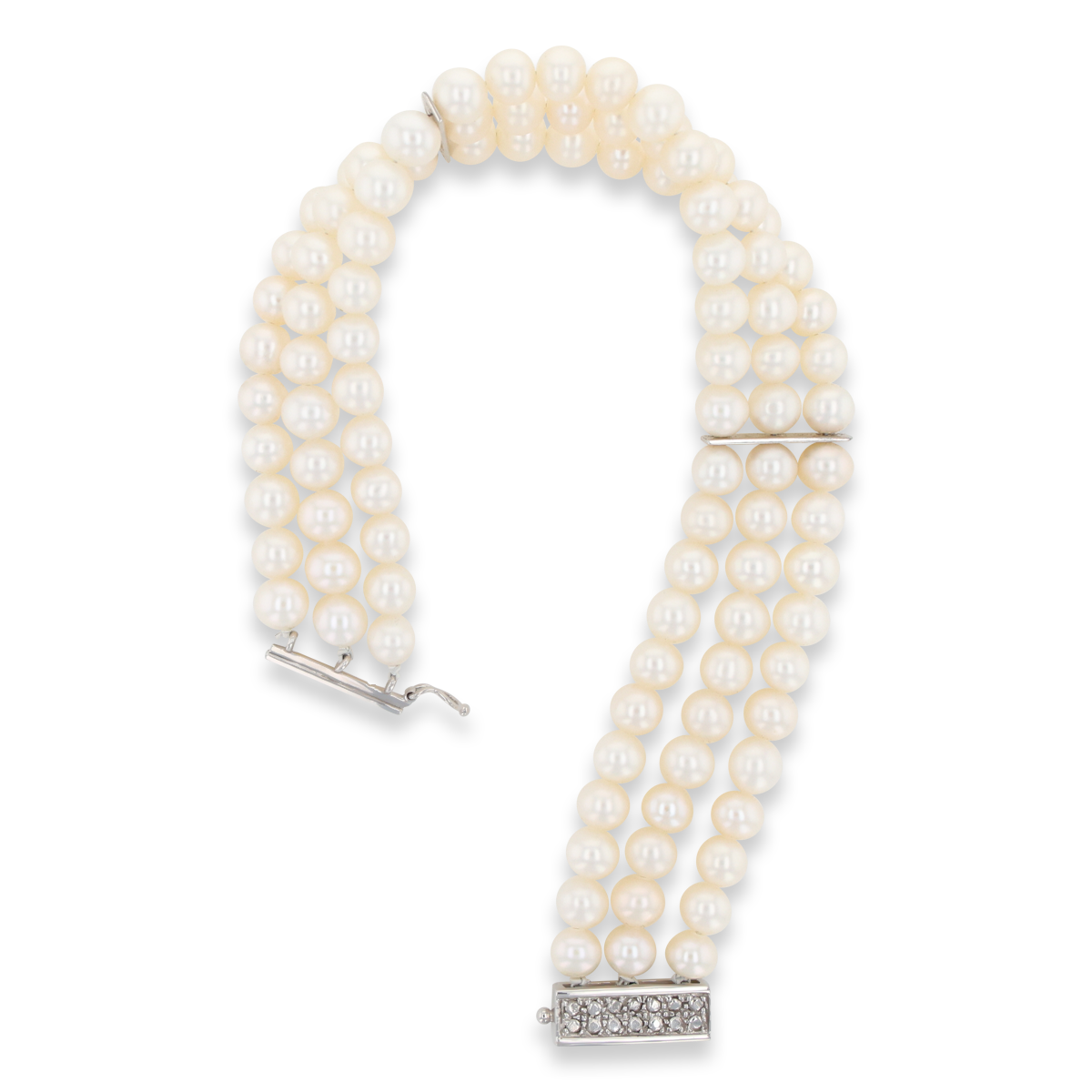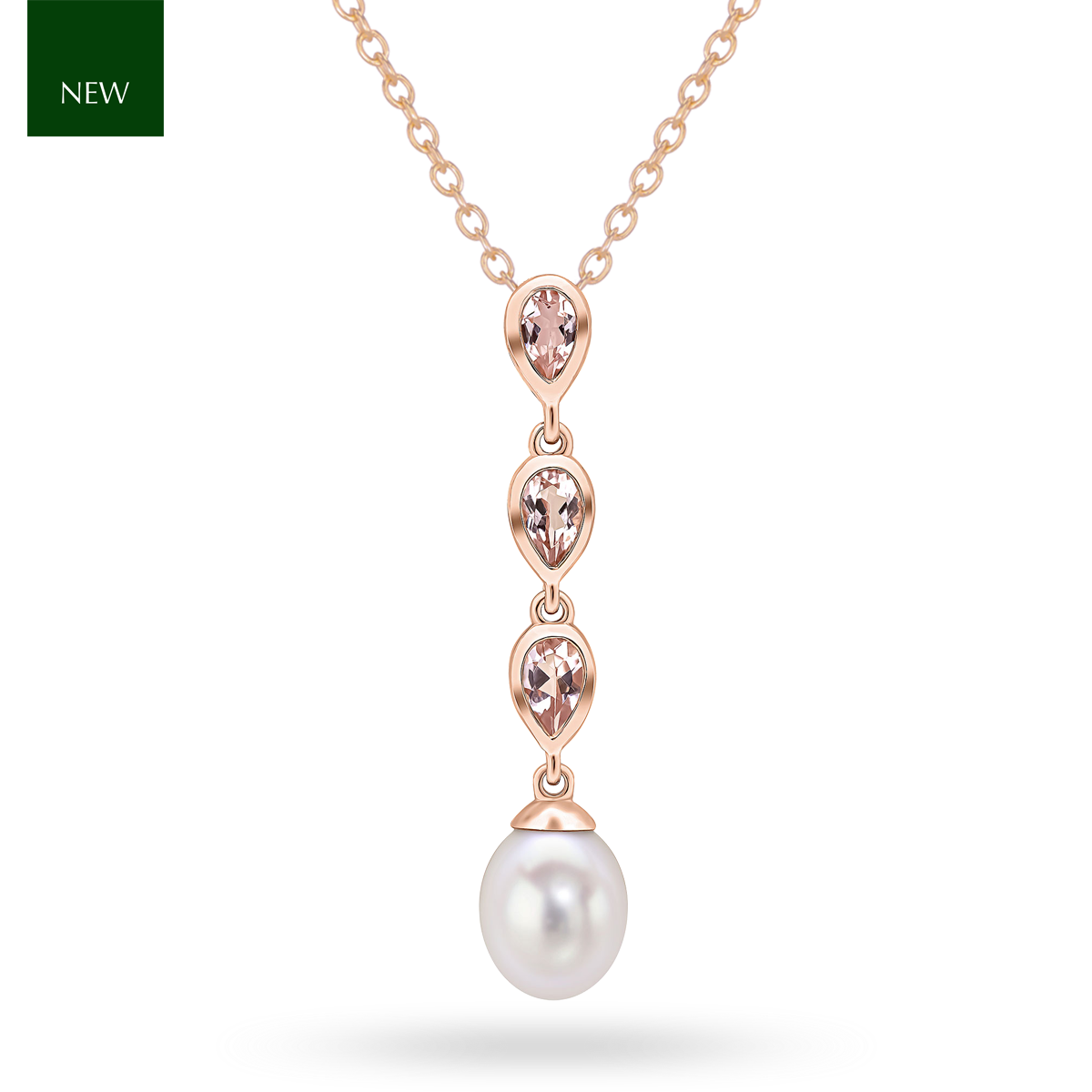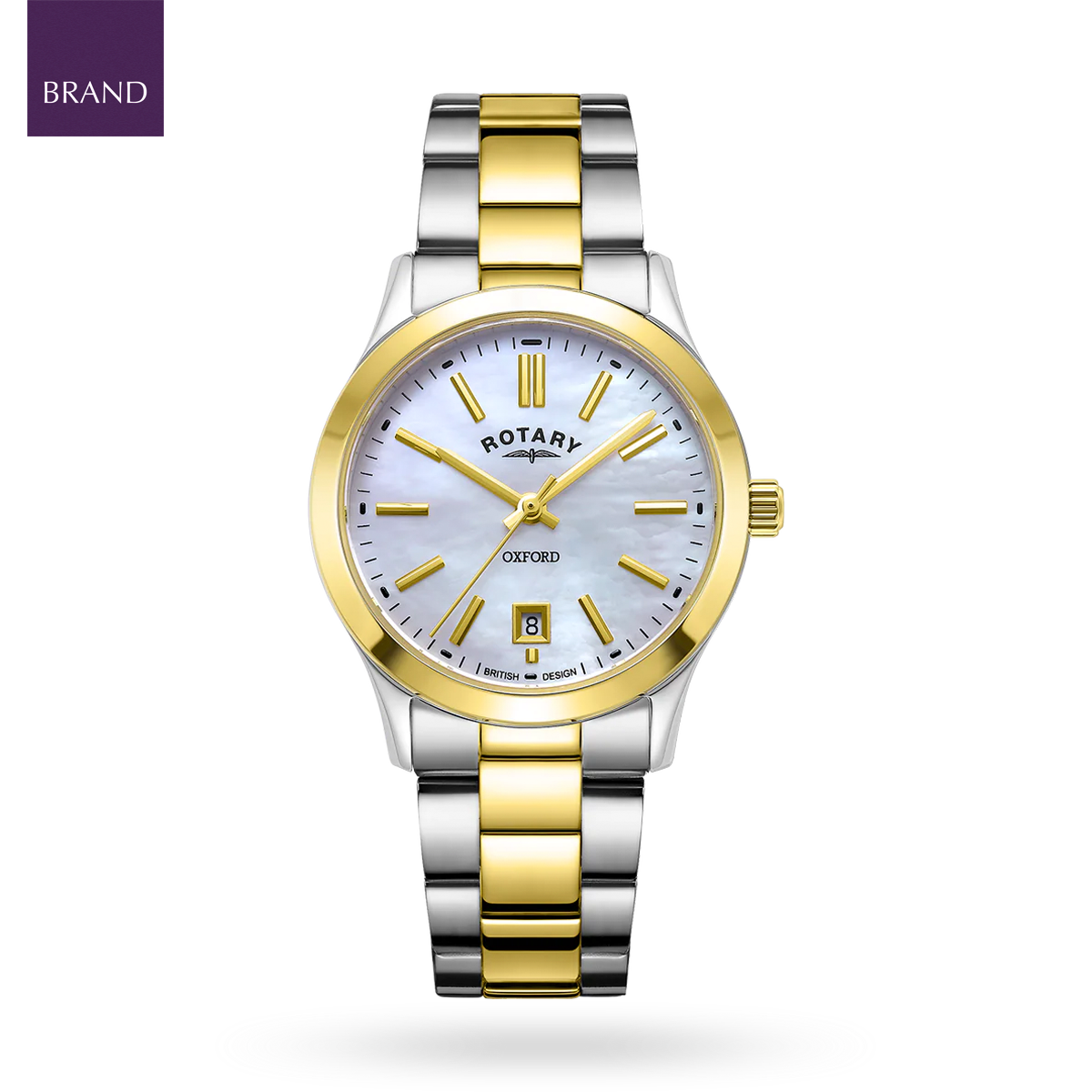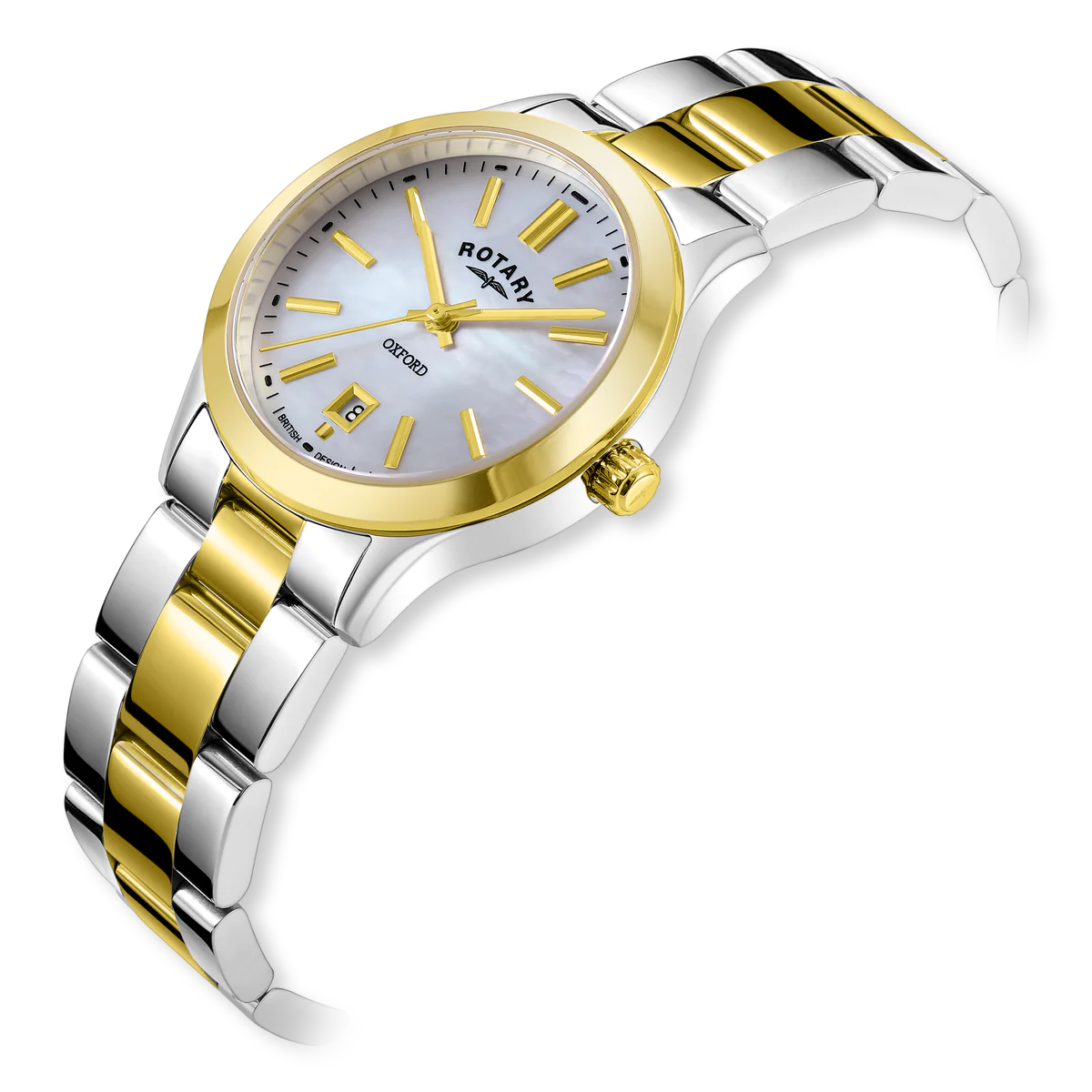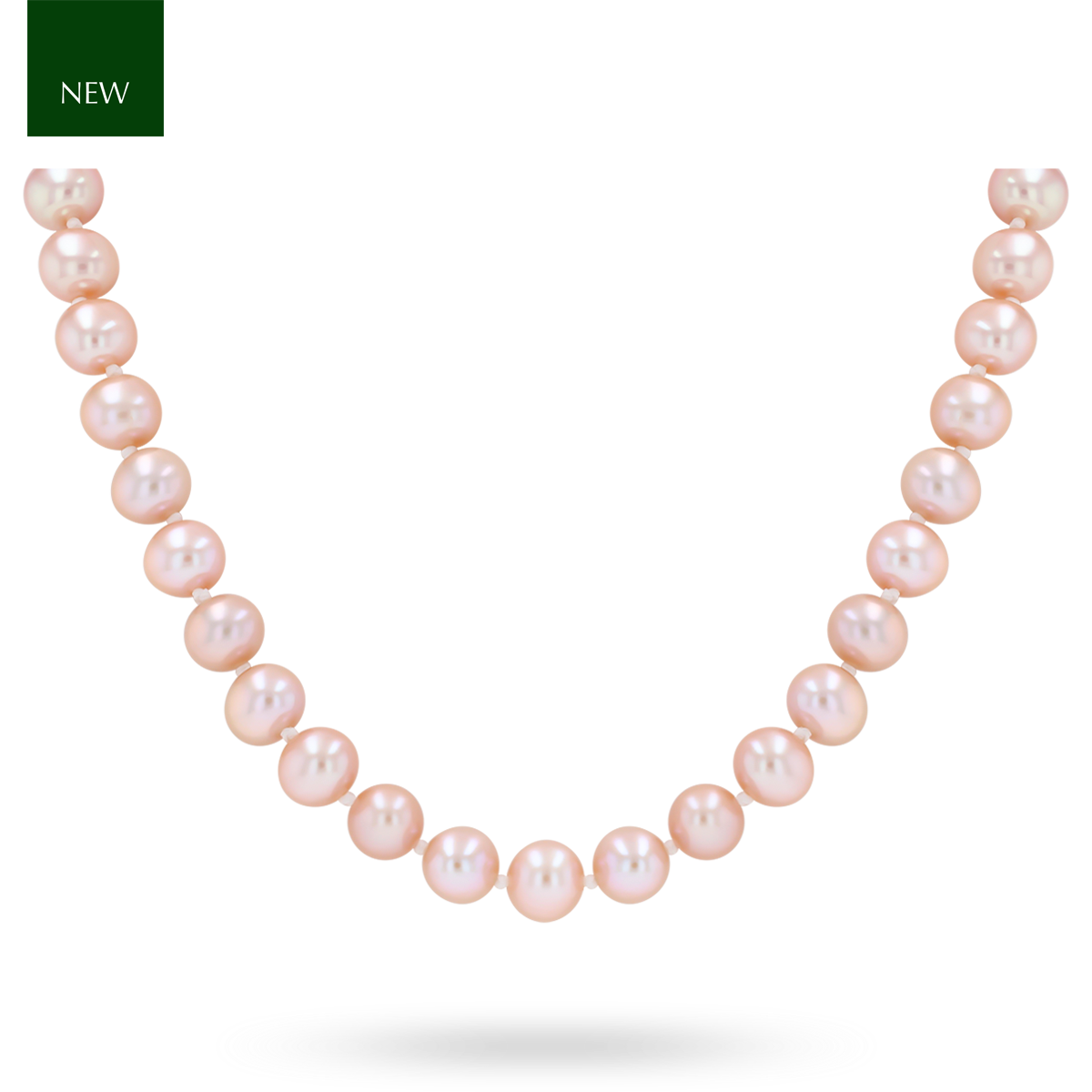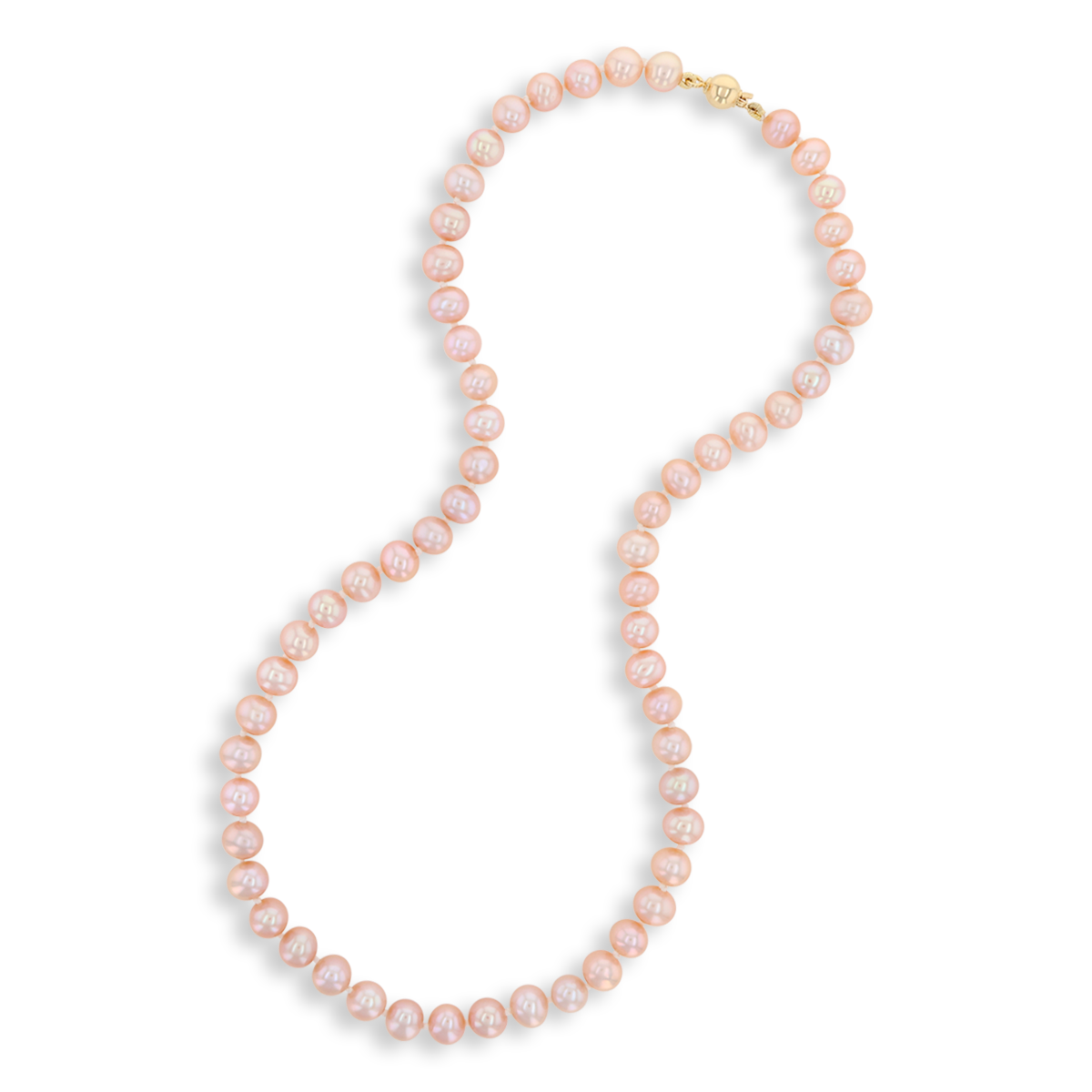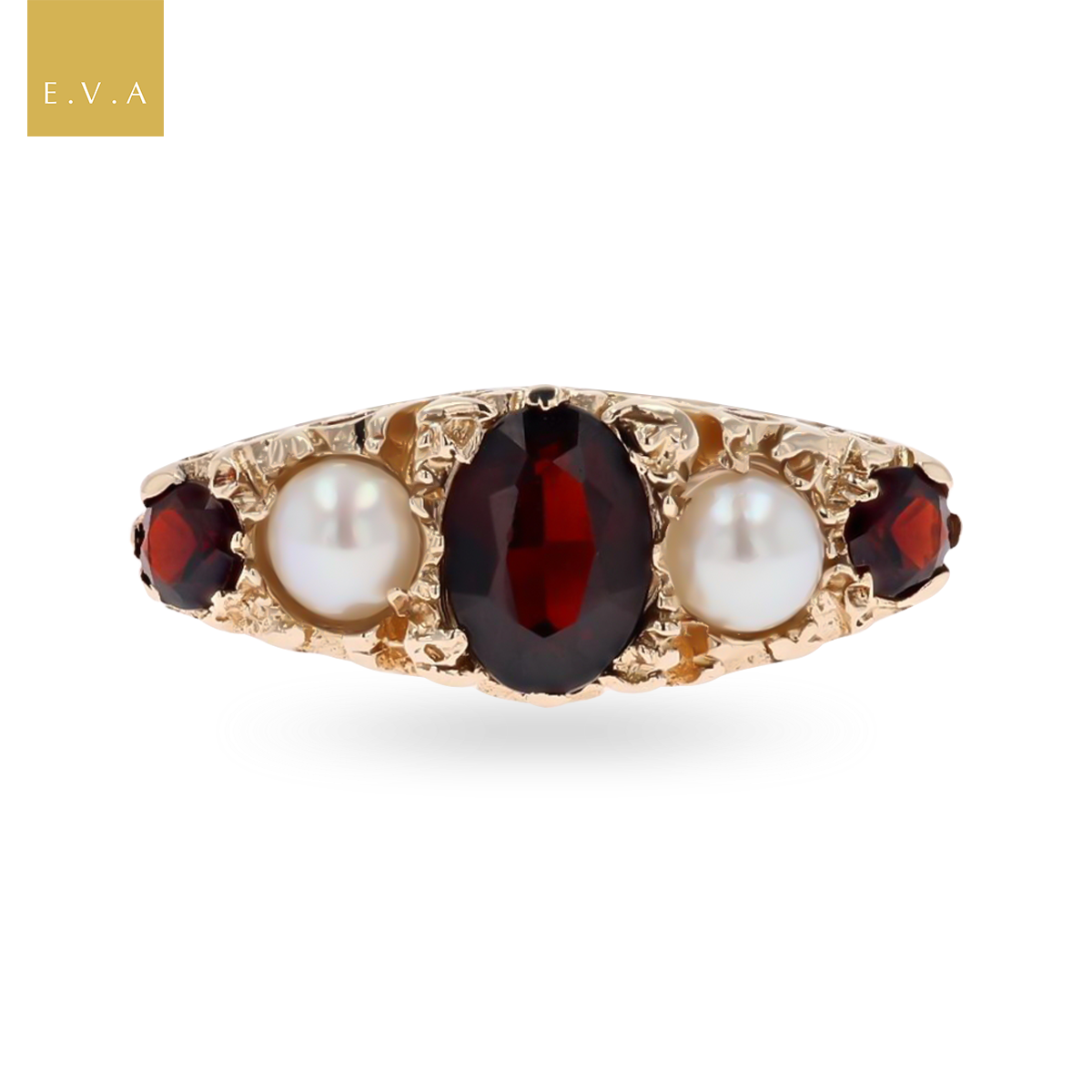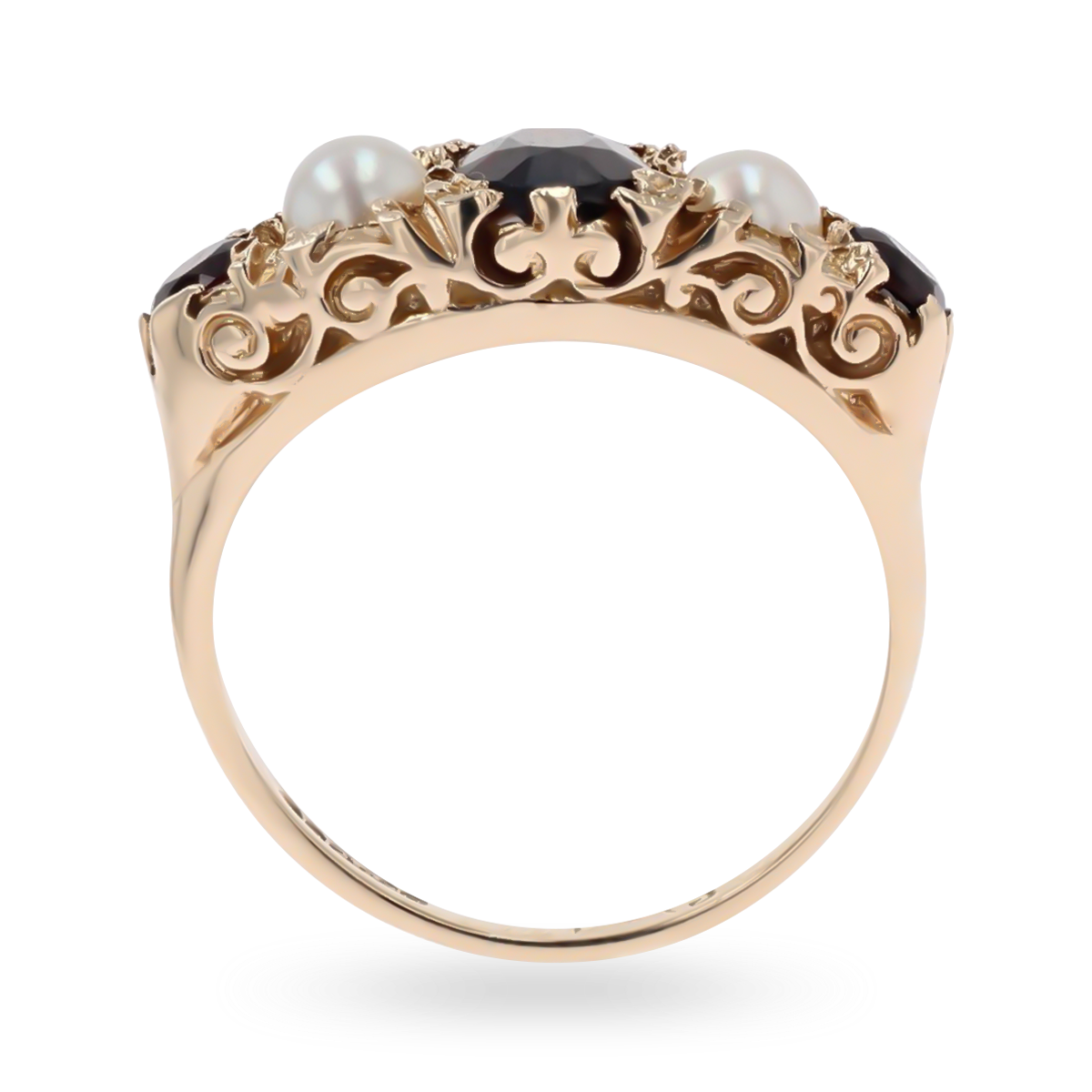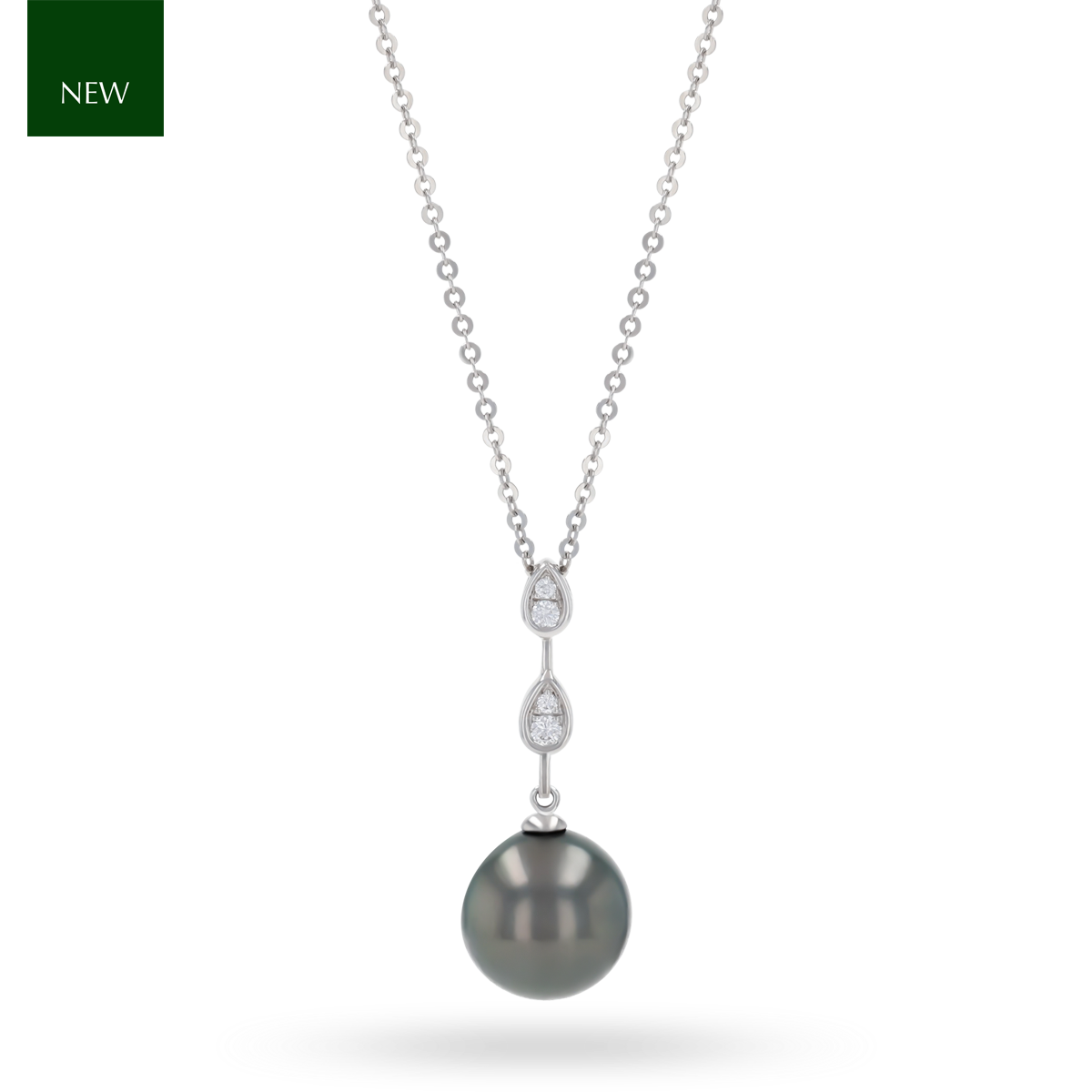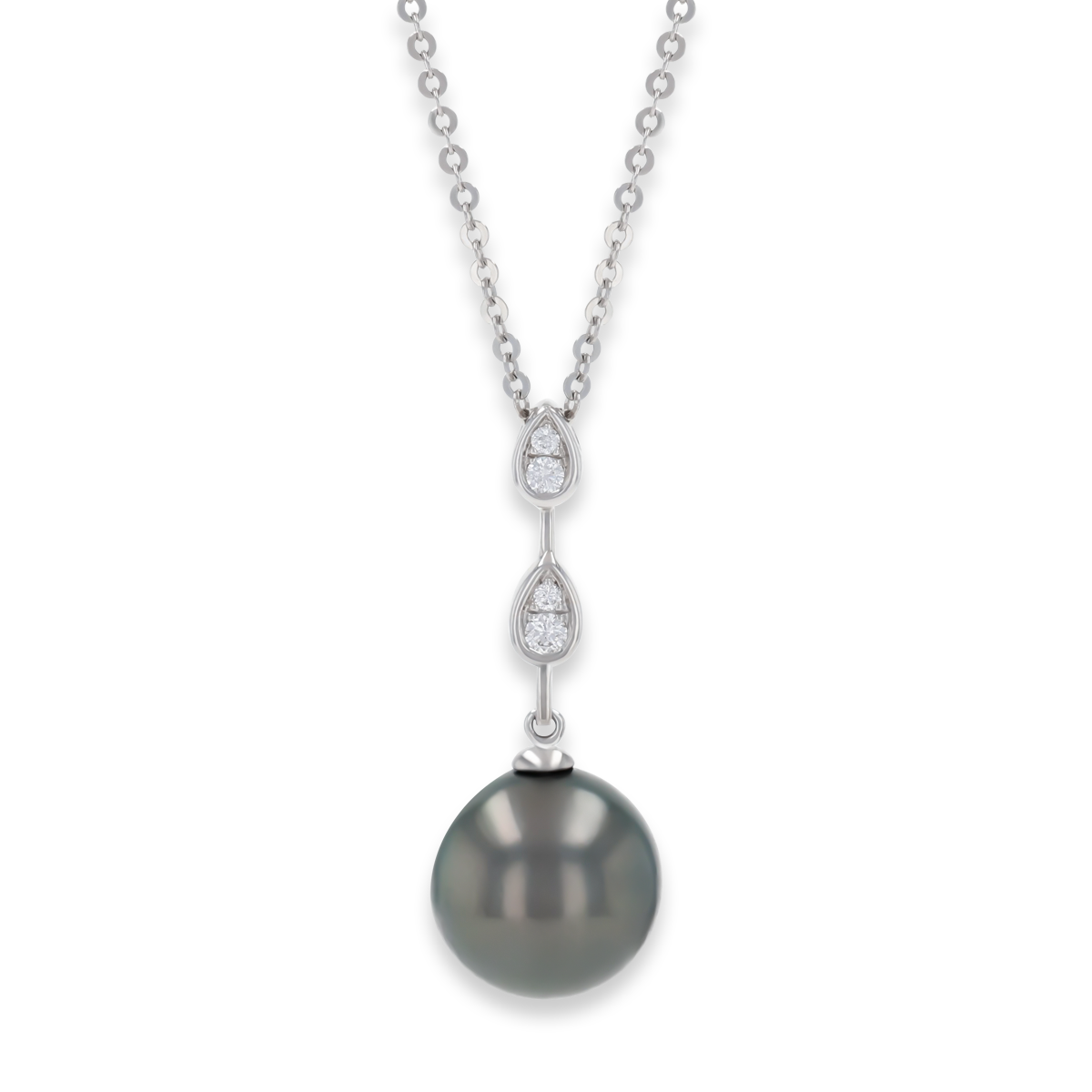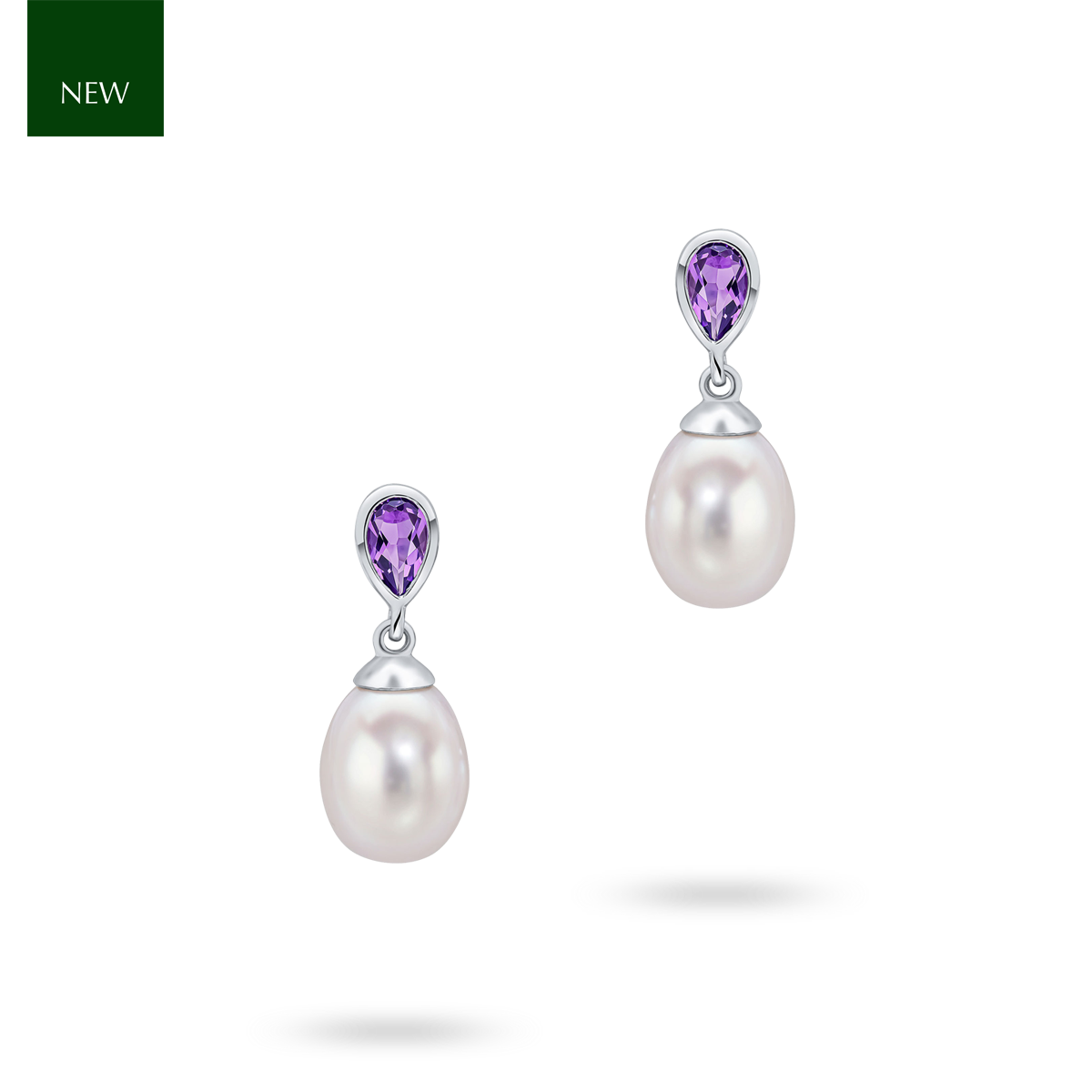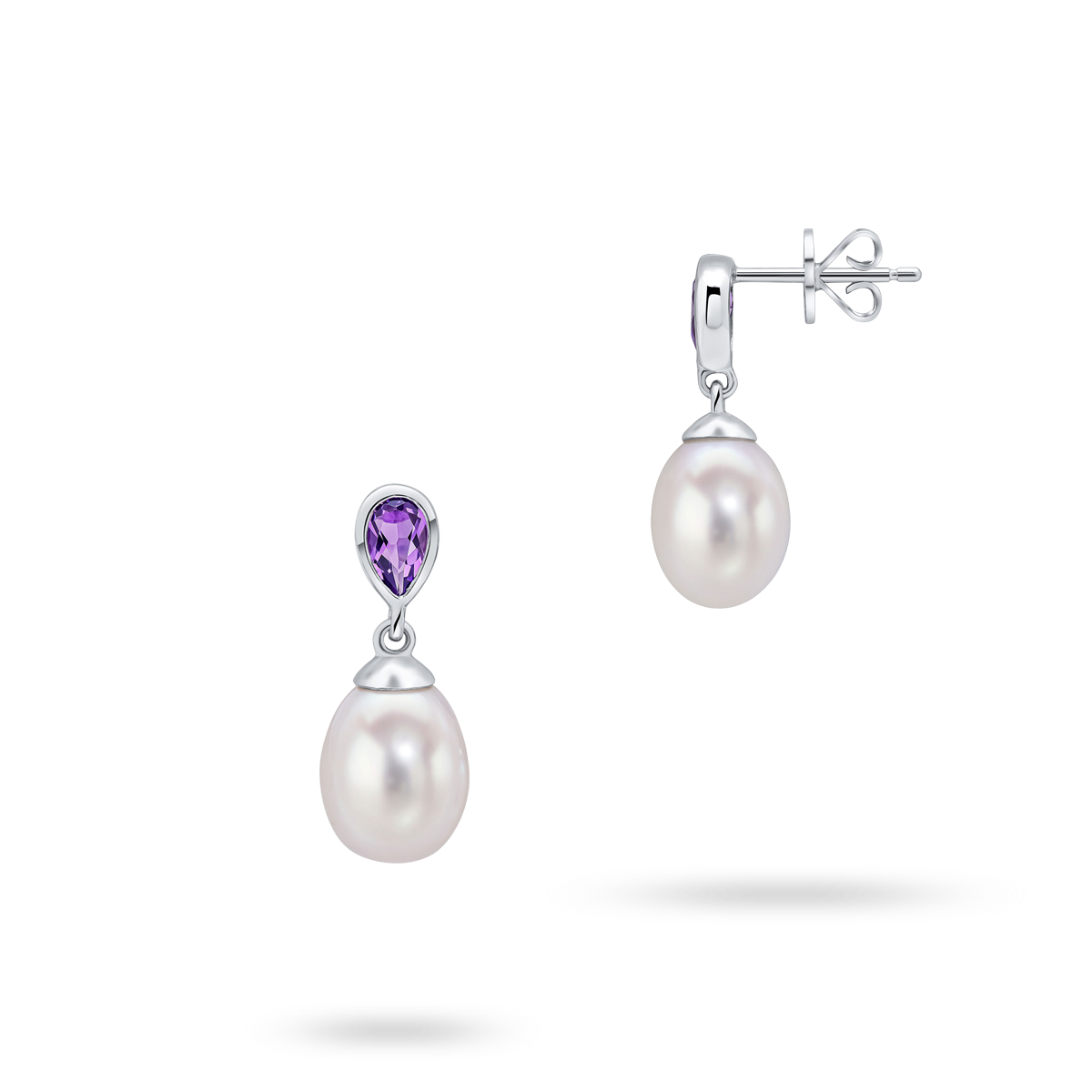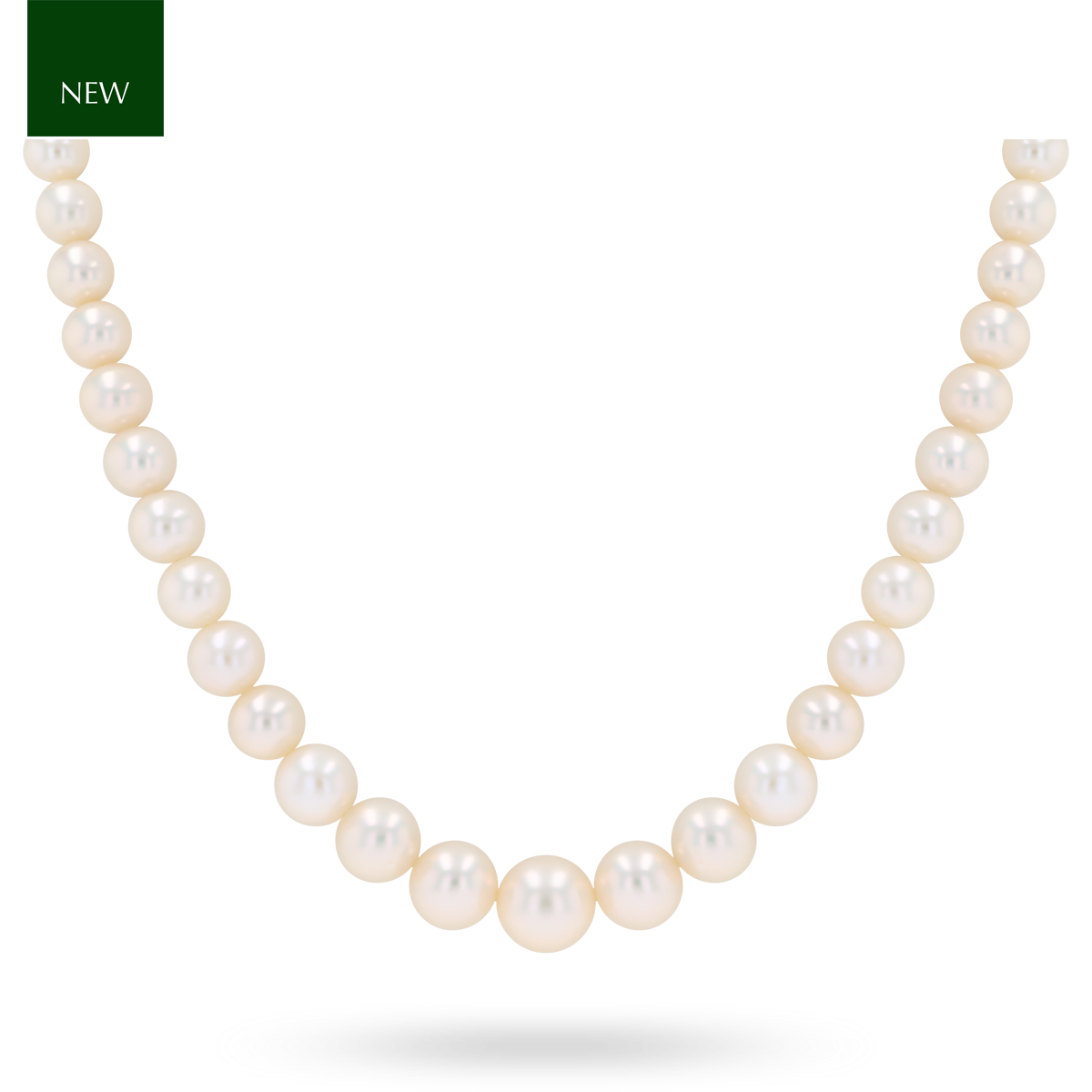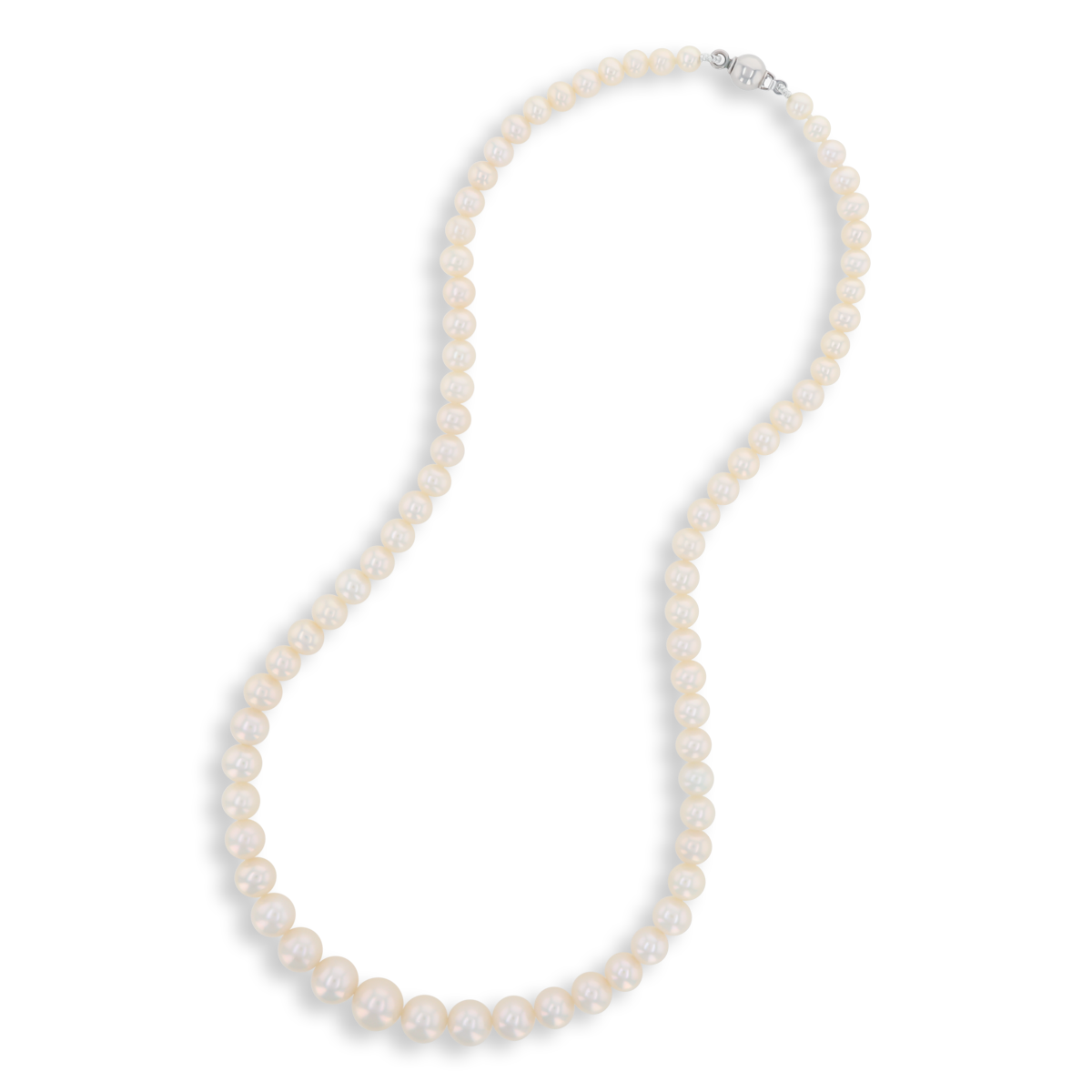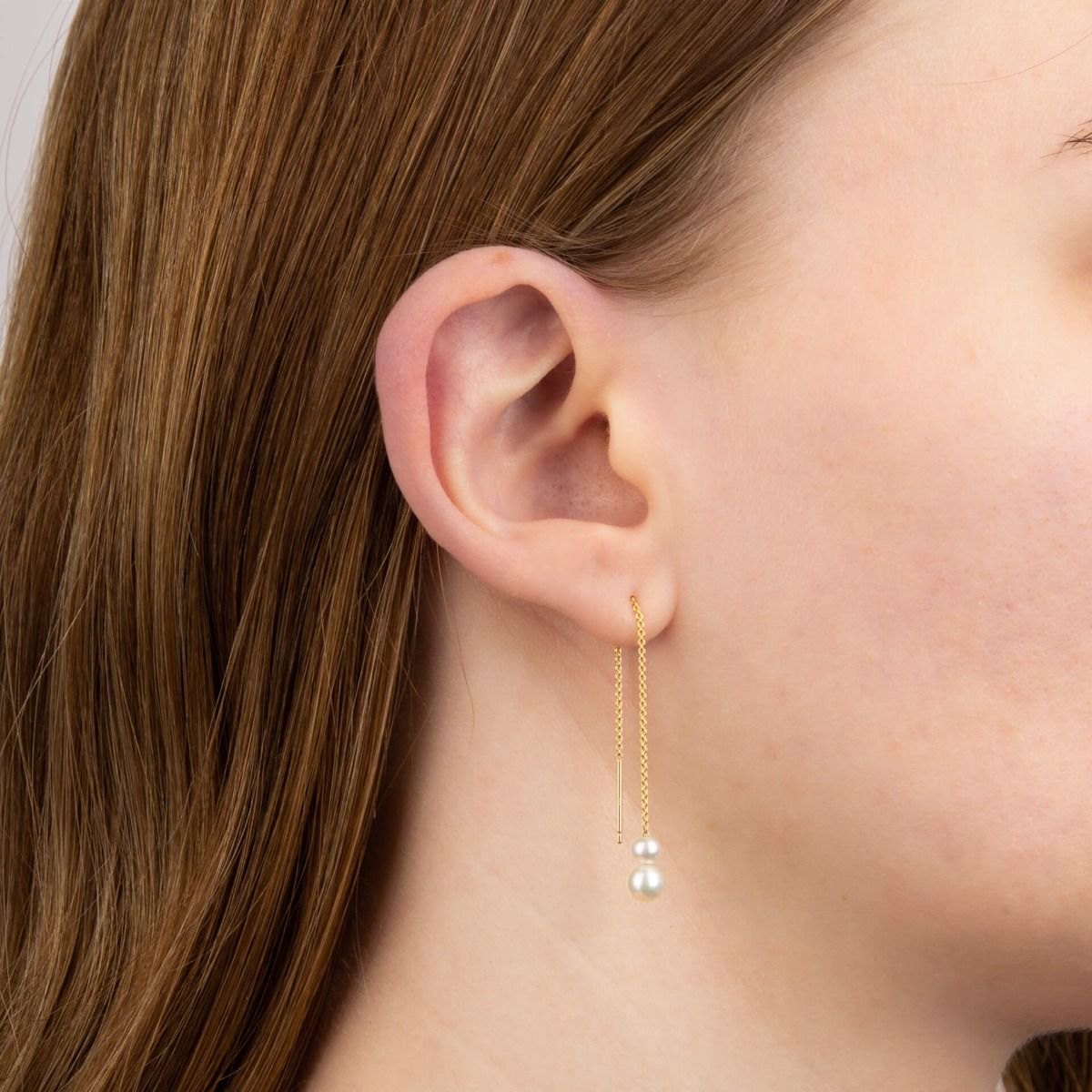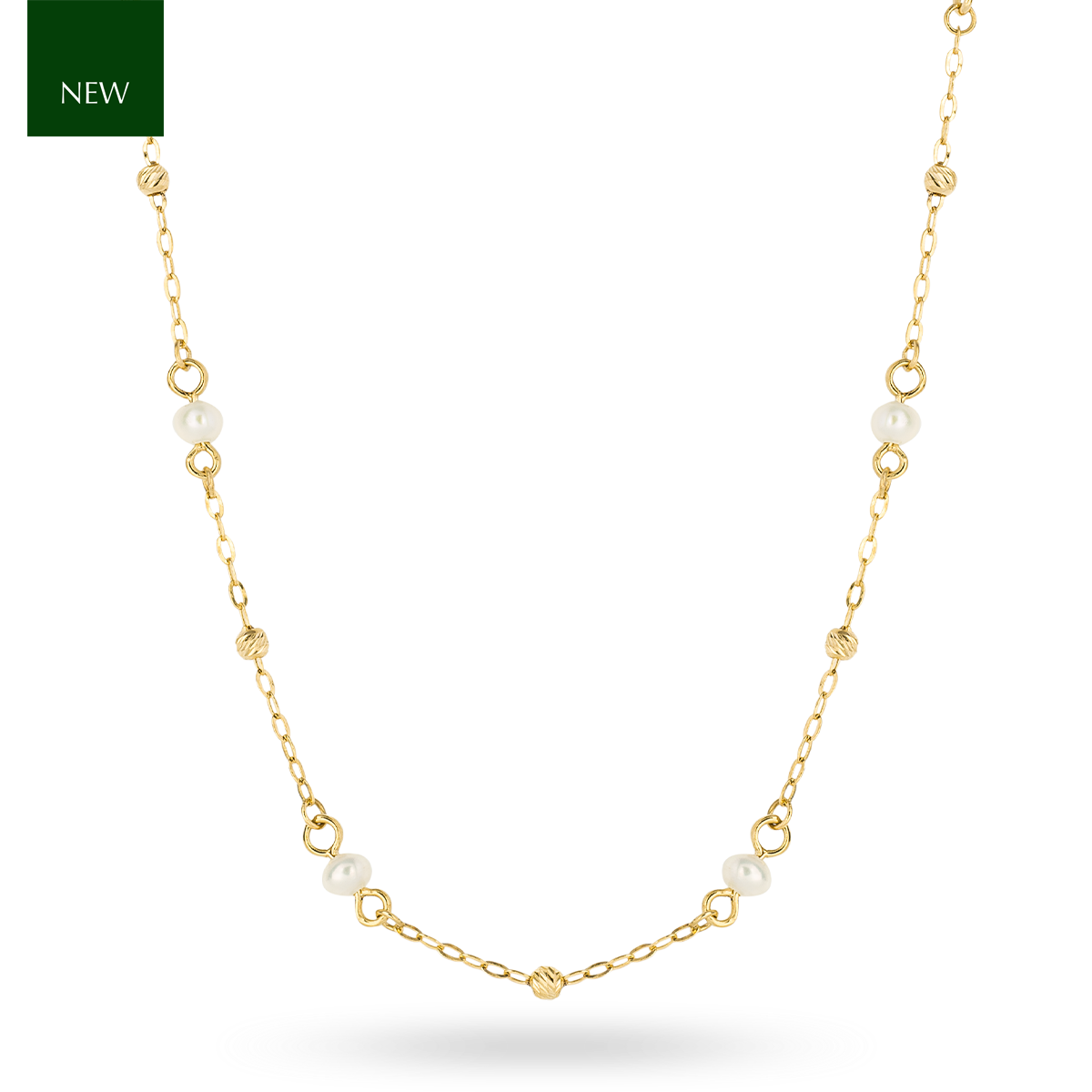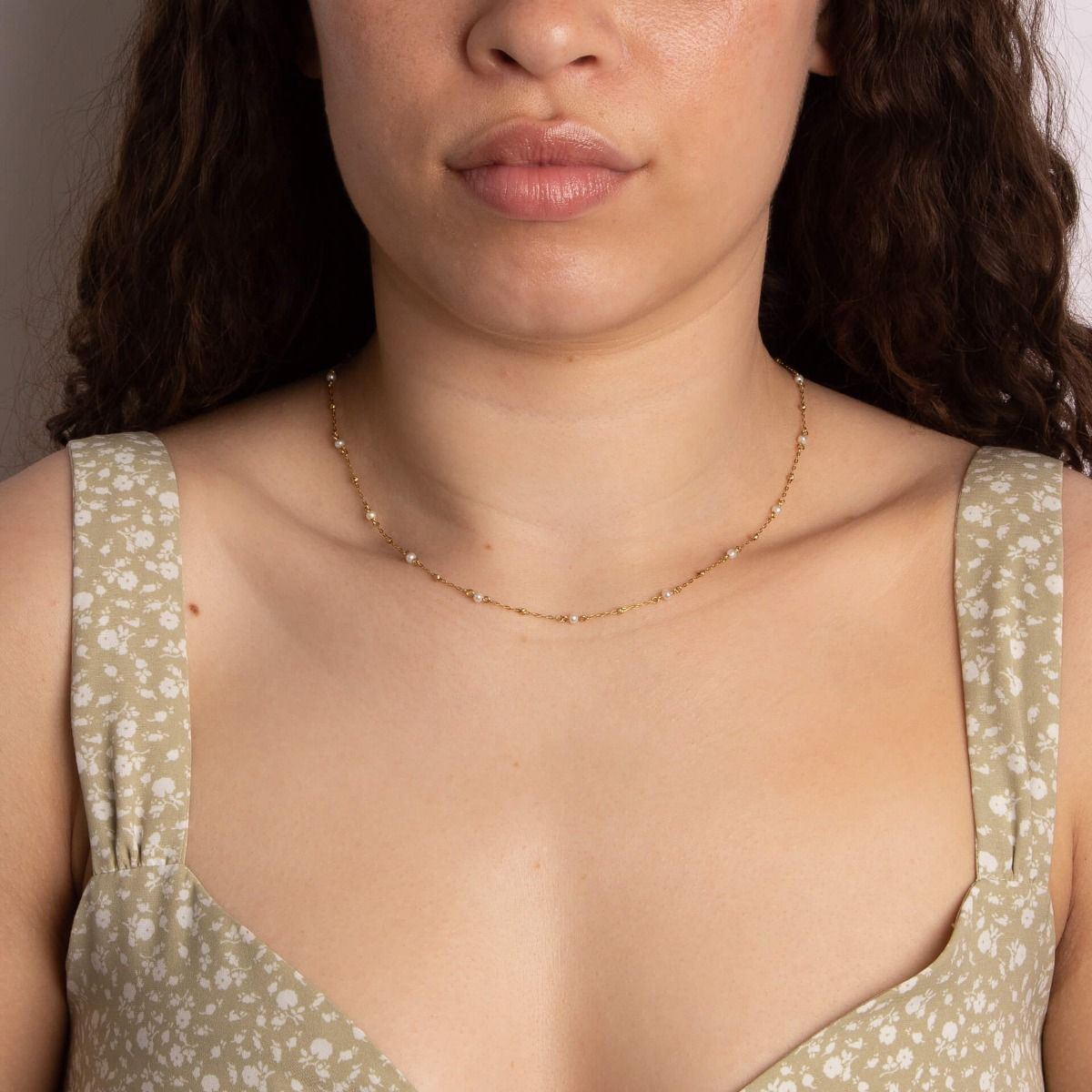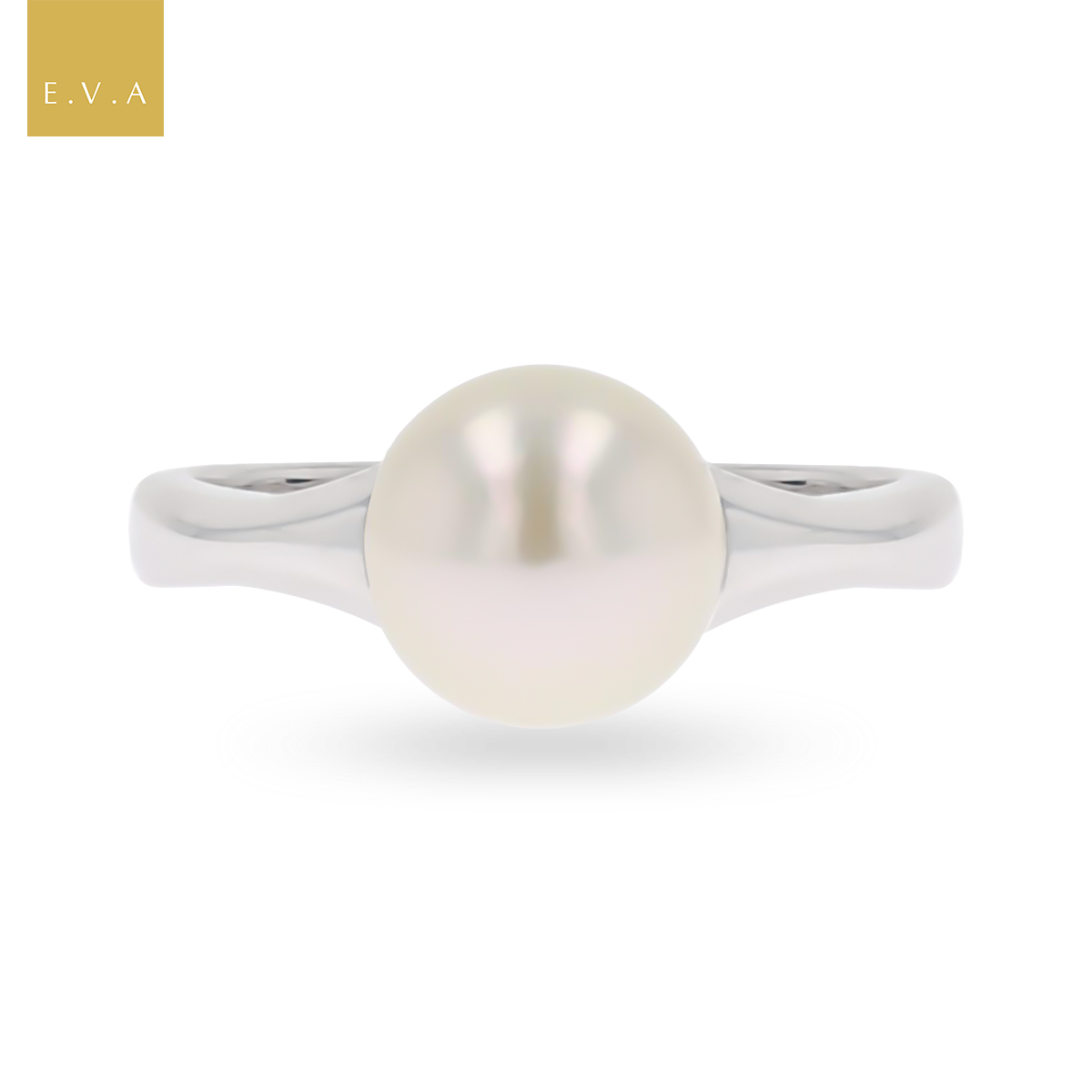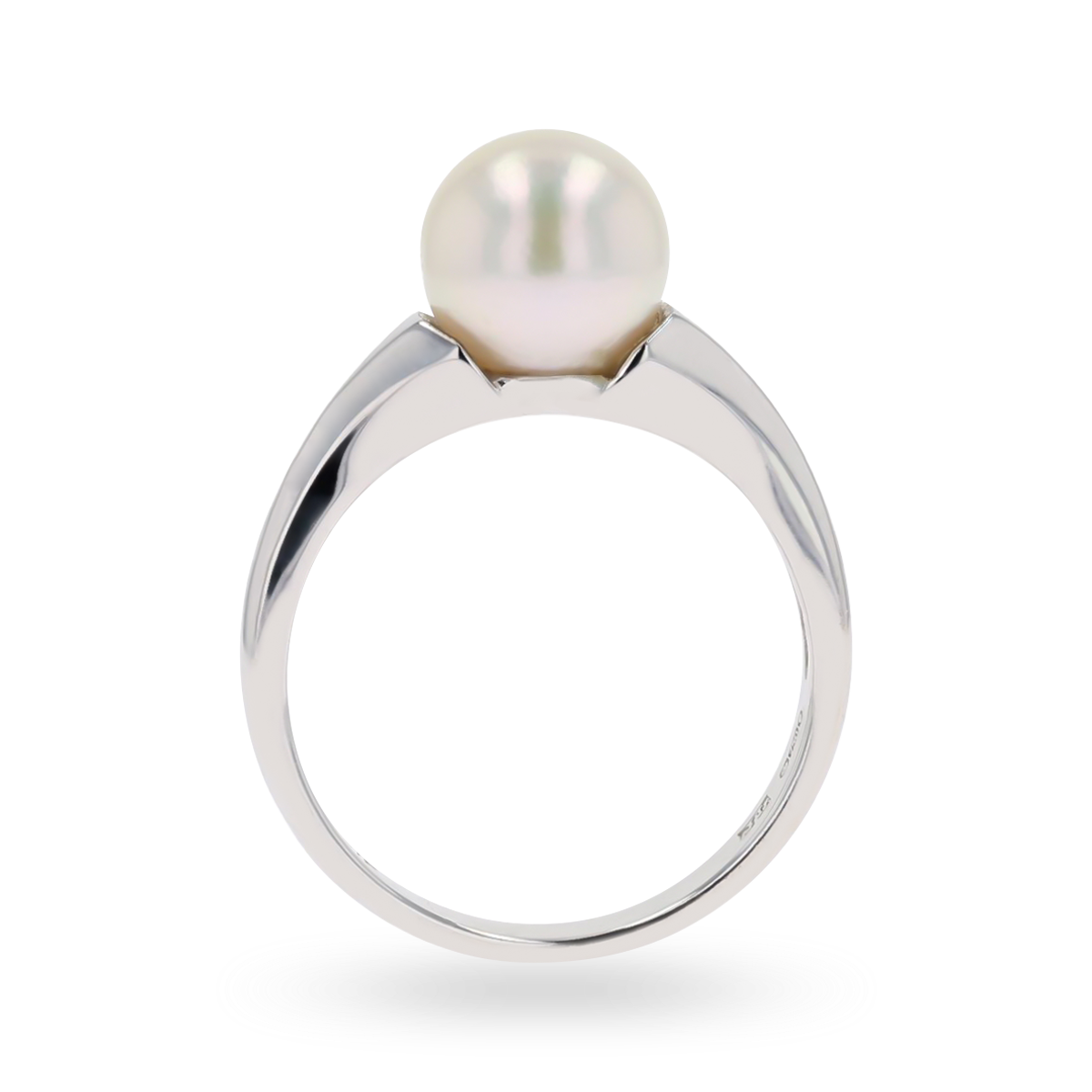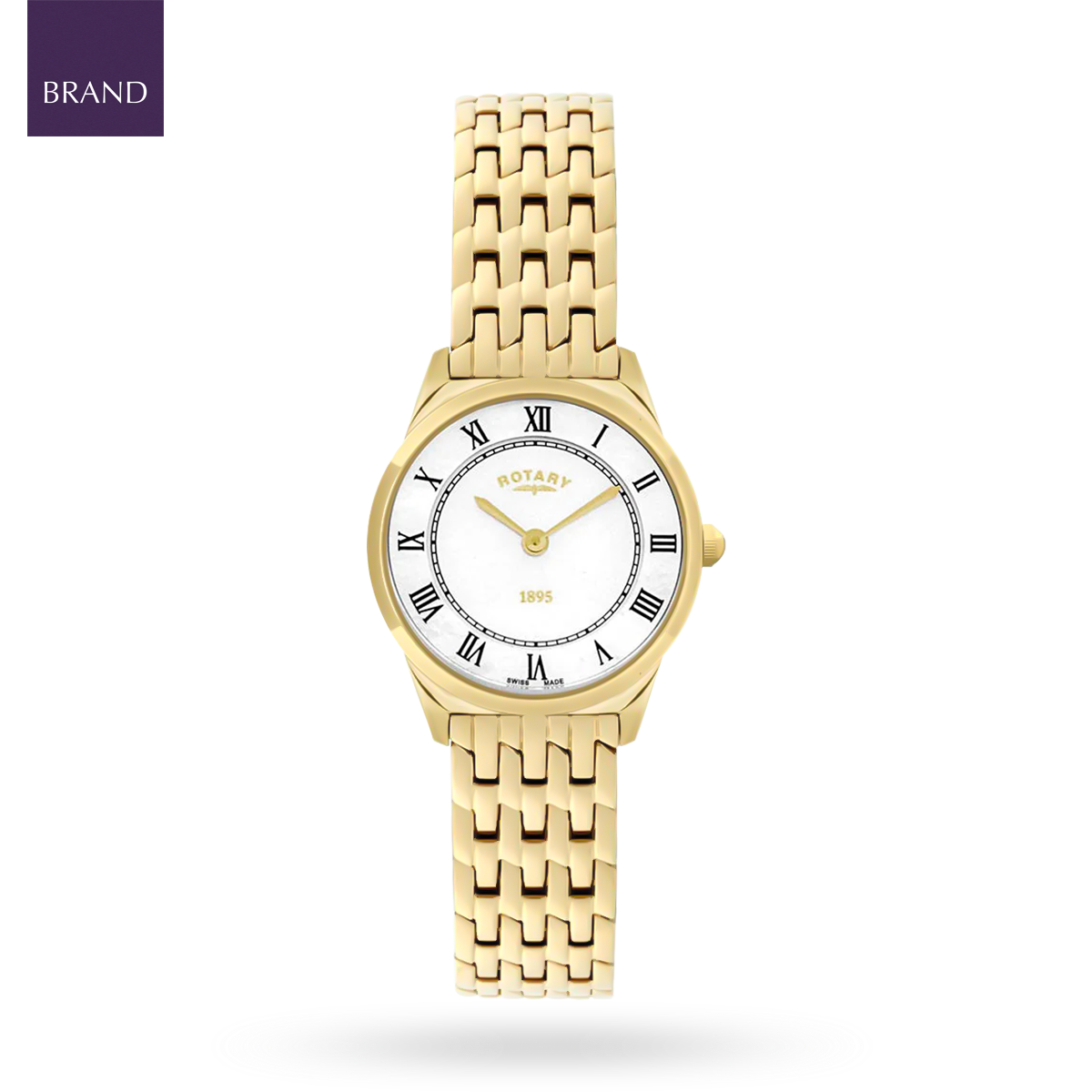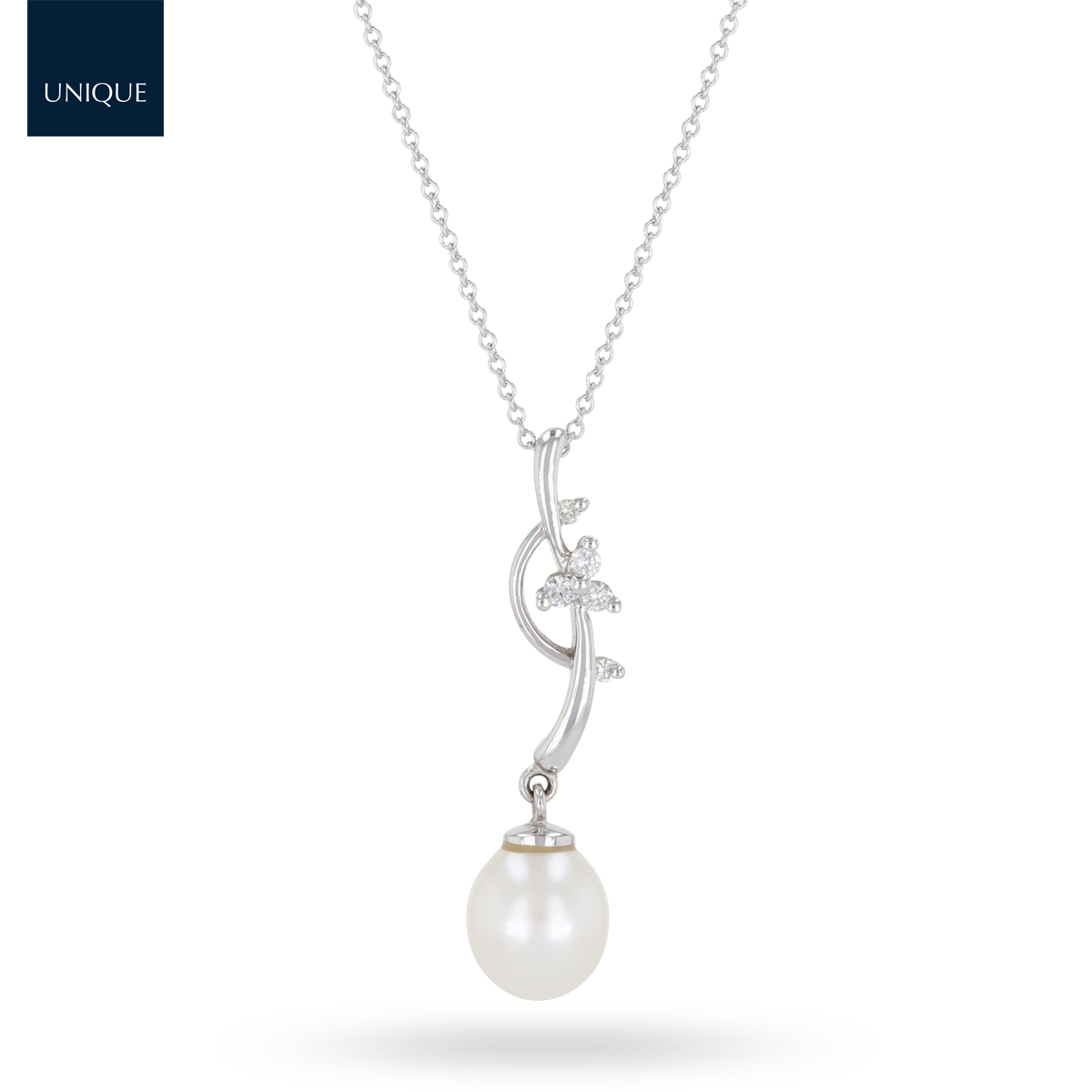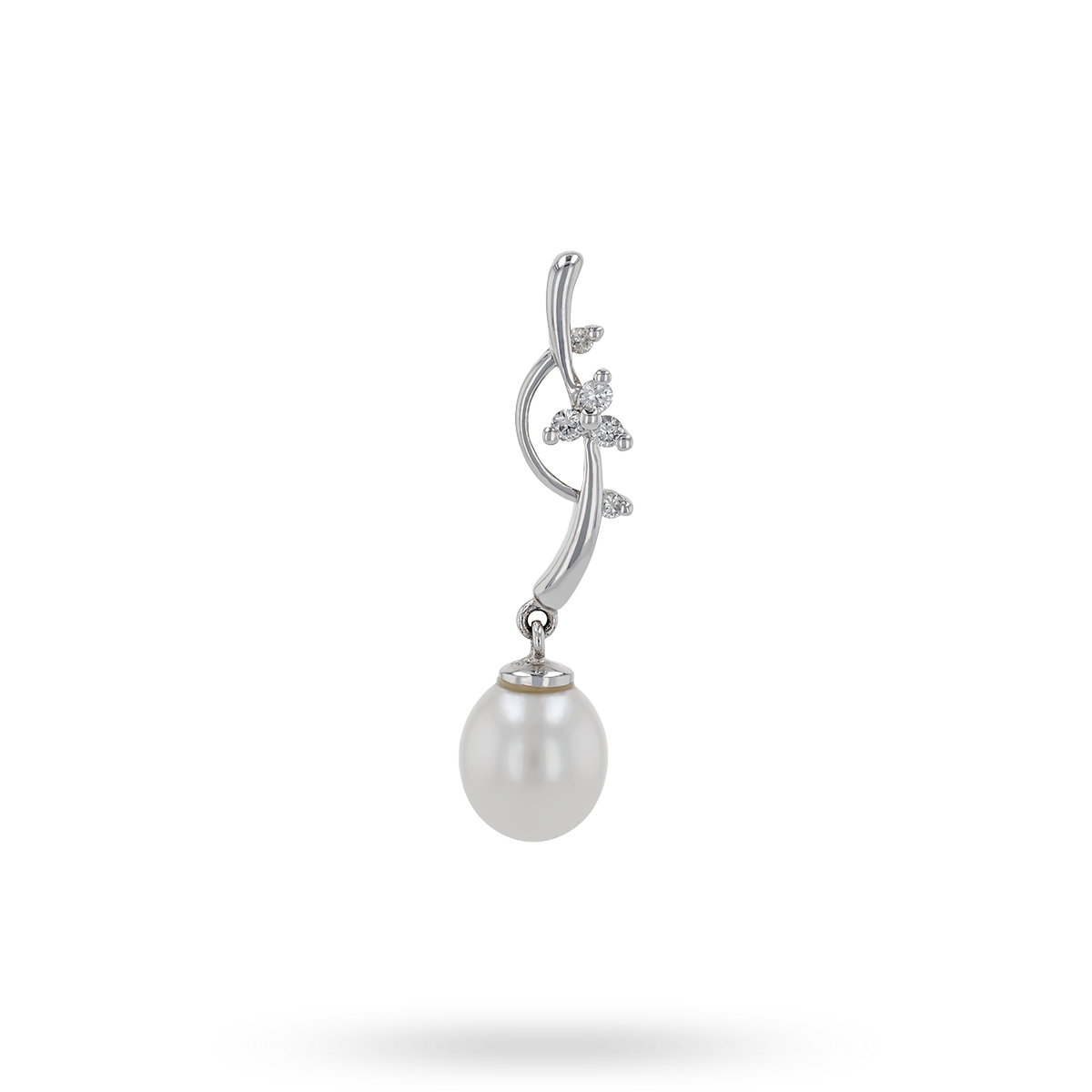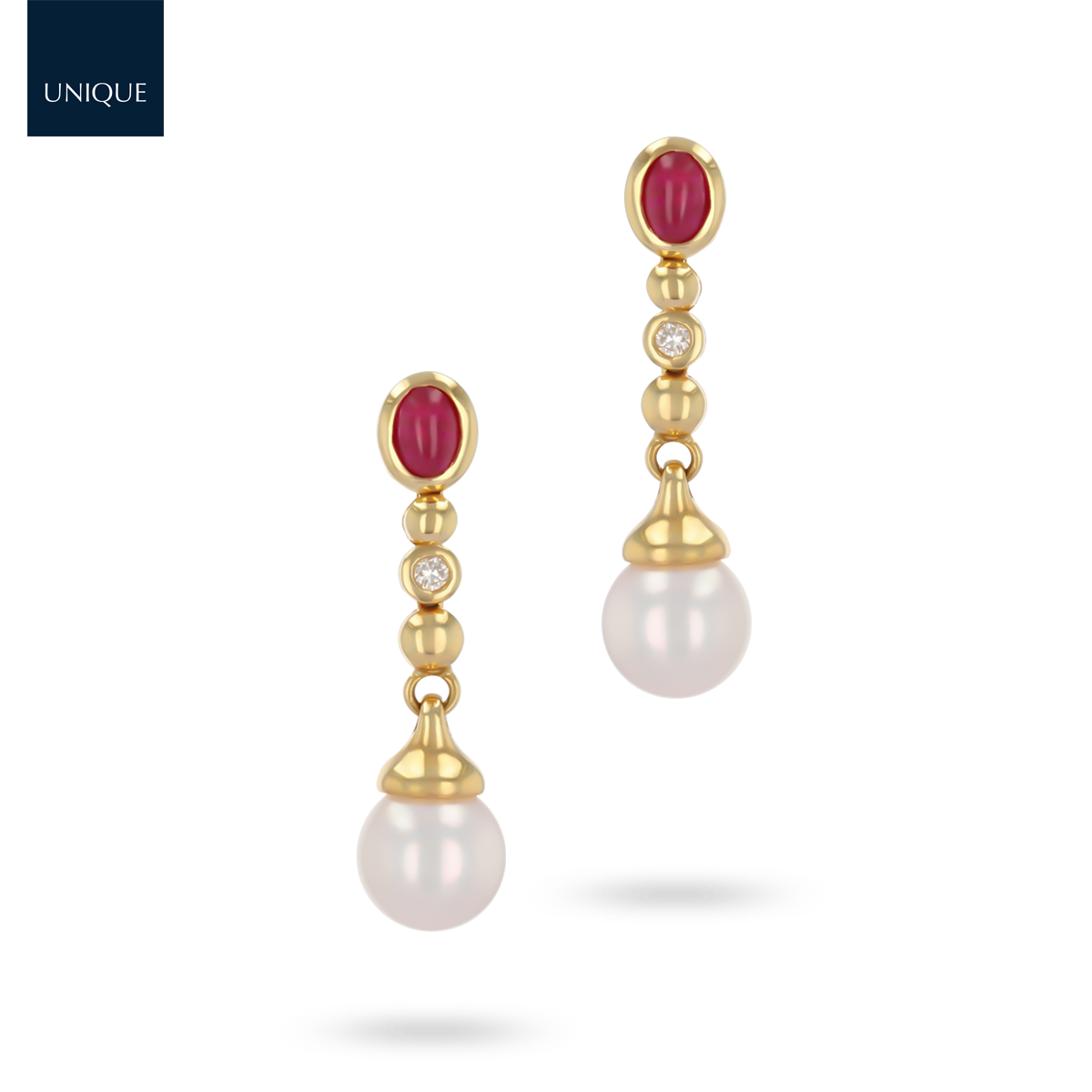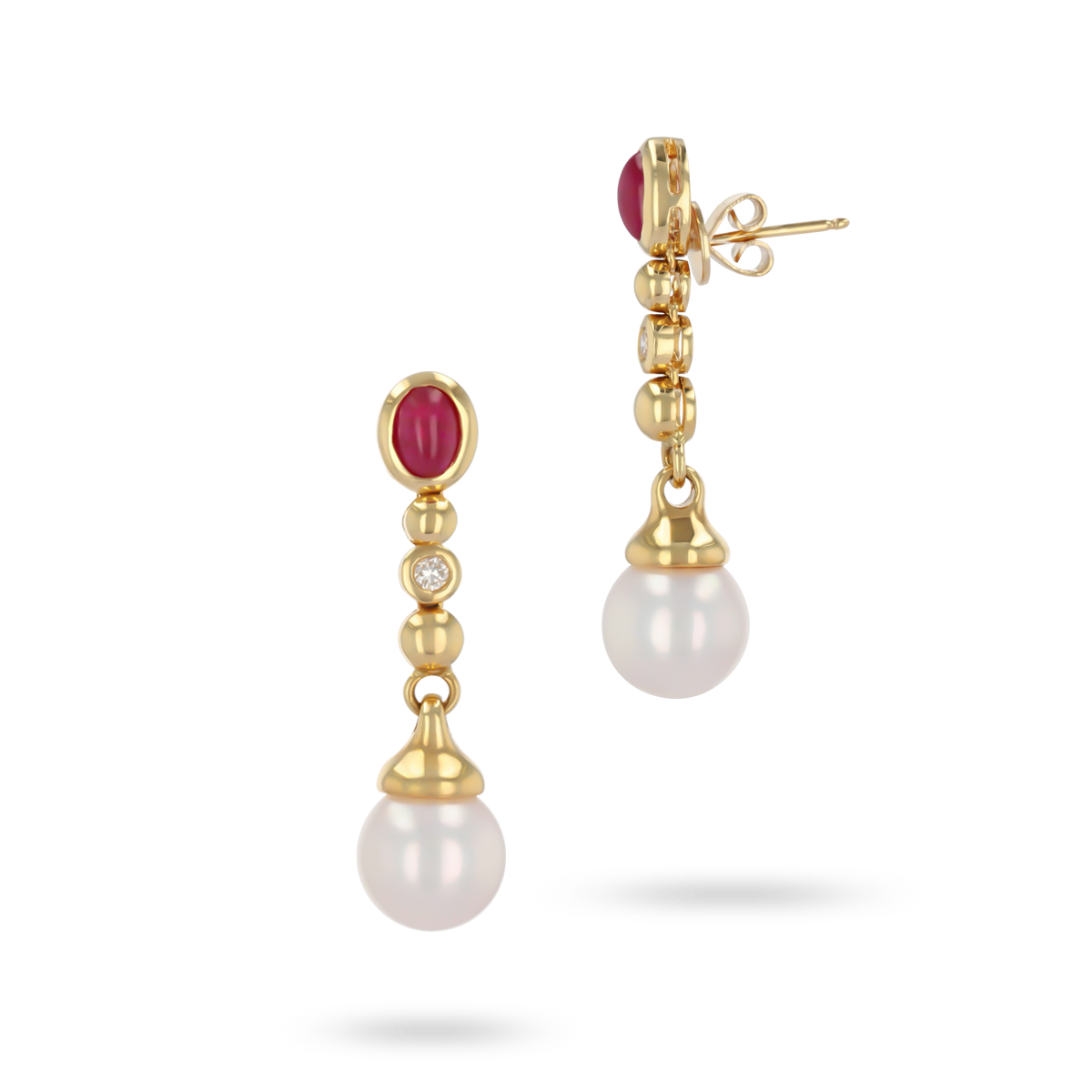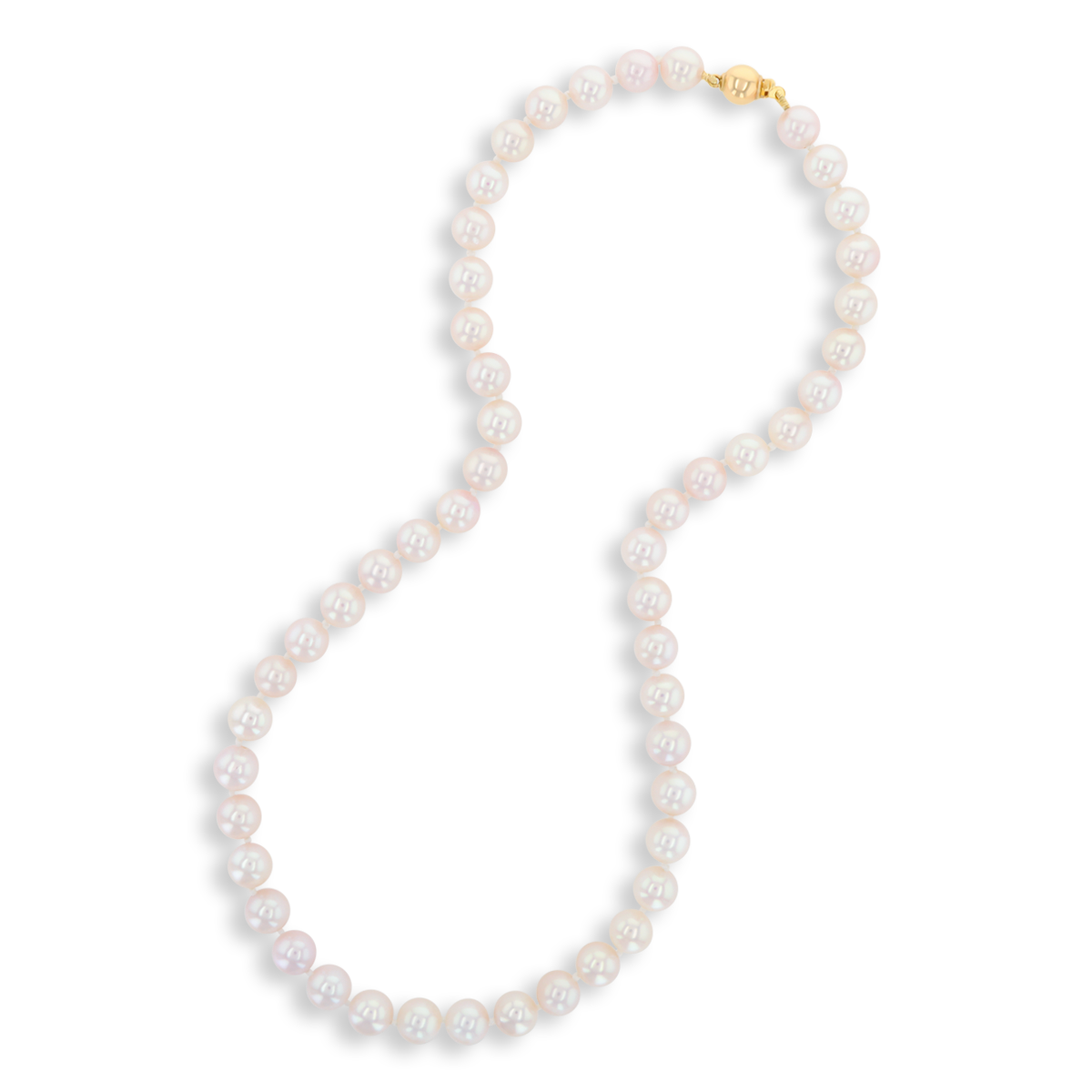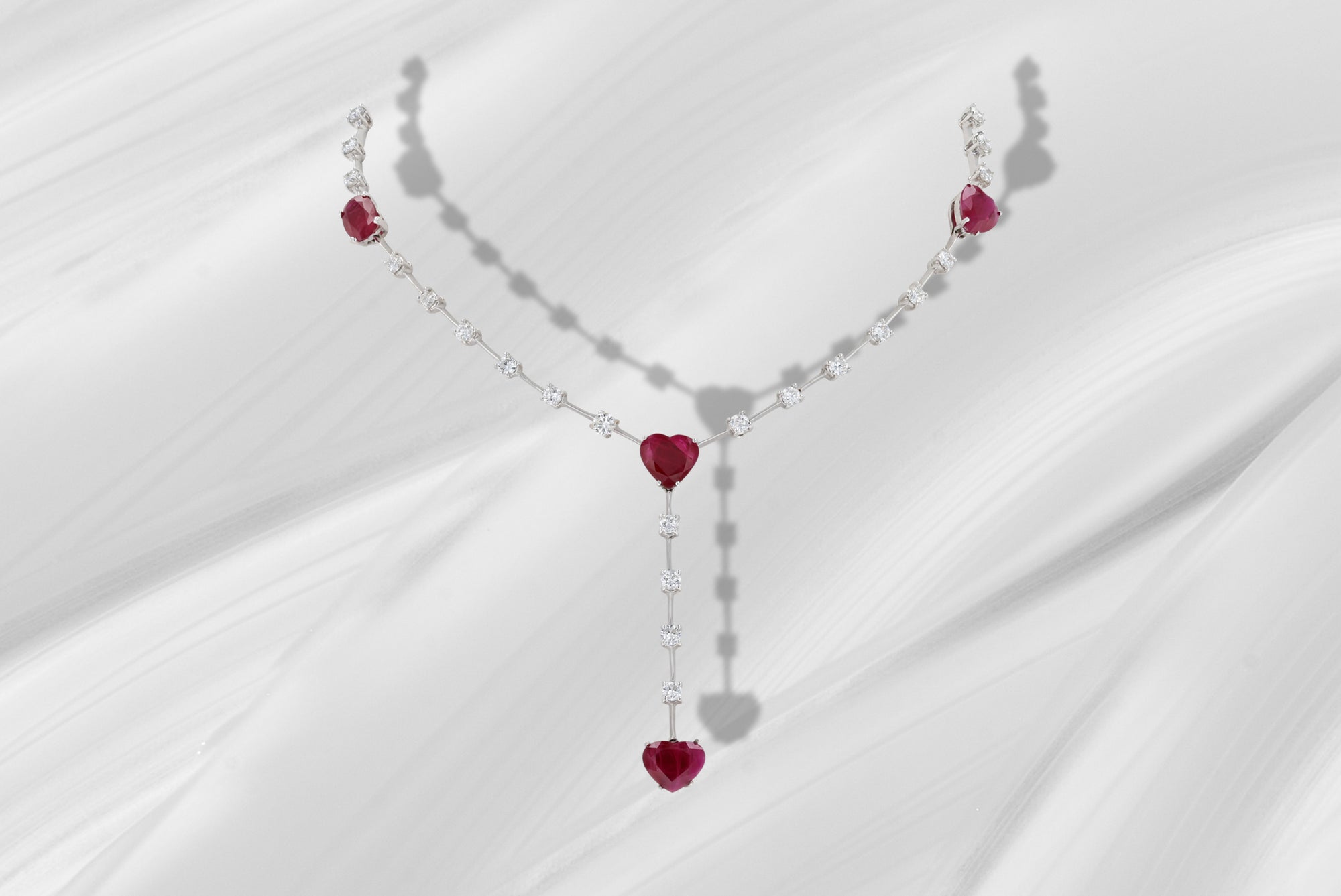The Queen of Gems
What is a Pearl?
Pearl is an organic gemstone, which has a composition of calcium carbonate, conchiolin and water. Pearls originate from water-dwelling animals, in certain types of shellfish (not the edible ones), otherwise referred to as molluscs. Pearl producing molluscs can be classified into two subgroups: Bivalves and Gastropods. Bivalves are molluscs that have a hinged shell, for example: saltwater oysters and freshwater mussels. Gastropods are single shelled creatures (univalves), that use a muscular flattened foot such as: a marine snail which produces Conch and Melo pearls.

9ct White Gold Cultured Freshwater Pearl Triple Strand Bracelet
Conch pearls are rare and display a pink to pinkish orange colour, often carved as cameos, due to their layered pink and white structure and can be found off the coast of Florida, the gulf of California and the West Indies. Melo pearls have a vibrant orange body colour, are round in shape and can be found off the coast of Malaysia, Myanmar and Vietnam. Both of these varieties showcase a flame-like structure and are non-nacreous, meaning they don’t exhibit the famed iridescent nacreous layer, usually seen in normal (freshwater and saltwater) pearls.

Natural Pearls
The idealised fairy-tale like story, often told about how a tiny grain of sand creates a pearl. Is unfortunately as made-up and as mythical, as most imaginary stories told are.
Natural pearls, are formed when the mantle (living tissue) of the molluscs, is damaged or irritated: by a parasite, disease or from predator attack. The mollusc as a defence mechanism, secretes (produces) a nacreous layer composed of conchiolin and aragonite, to protect the soft internal body of this marine animal. This secretion of nacre, coats the irritant (in many layers) and as a result, a pearl is created. There are two main types of pearls: a cyst pearl and a blister pearl. A cyst pearl is a whole round pearl, that separates away from the mantle and is composed of several concentric layers of nacre, which can be found inside the molluscs body. A blister pearl is a half pearl, that forms on the inside of the shell and requires it to be sawn away, resulting in a domed shape. Seed pearls, are less than 2mm in diameter and can be formed naturally or as a by-product of culturing.

Commercially, natural pearls are seldom found and command a high premium, due to their limited availability. Today, the majority of all pearls available to purchase, are now cultured. The catalyst of cultured pearls, accelerated in the 1930’s and has since terminated the concept of natural pearl fishing (due to the decimation of natural pearl farms in the late 1800s). Consequently, all natural pearls on the market are considered vintage and are usually found at premier auctions and private sales, where they reach unworldly figures.

9ct White Gold Pearl and Aquamarine Double Drop Earrings
Cultured Pearls
Cultured pearls, are the formation of pearls with human interference. A mollusc (i.e a freshwater mussel or saltwater oyster) is removed from the water. The mollusc is inserted with, a small piece of sacrificial mantle tissue (from another mollusc), around the edge of its mantle. This placement of tissue, will catalyse the mollusc to secrete nacre around it, creating a pearl. The mollusc is returned to the water, for two or more years and then the pearls are removed.

18ct White Gold Cultured Freshwater Oval White Pearl & Diamond Set Pendant & Chain
Freshwater Cultured Pearls
If the mollusc used, is a freshwater mussel, this will produce freshwater cultured pearls. Mussels can grow up to 25cm, producing pearls up to 15mm. The first production of these pearls took place in Lake Biwa, Japan and were baroque. Baroque pearls are irregular in shape and are now mainly sourced, from the Mississippi Valley River in North America. Today, the largest production of freshwater cultured pearls, is extracted from China.

18ct Yellow Gold Cultured Button Pearl Solitaire Ring
Saltwater (Marine) Cultured Pearls
If the mollusc used, is a saltwater oyster, a mother of pearl bead is inserted next to the mantle tissue, whereby the oyster secretes nacre around the mother of pearl bead, creating saltwater (marine) cultured pearls. There are four main types of saltwater (marine) cultured pearls: Akoya, South Sea, Tahiti and Mabé.
- Akoya pearls grow in white lipped Akoya oysters, which can grow up to 10cm, producing white pearls up to 8mm and are found in Japan.
- South Sea pearls grow in white or gold lipped oysters, which can grow up to 30cm, producing white or golden pearls up to 18mm and are located around the Pacific such as: Australia, Islands of Indonesia, South Pacific and China.
- Tahitian pearls grow in black lipped oysters, which can grow up to 20cm, producing black or grey pearls up to 18mm and are exclusively sourced from Tahiti and Cook Islands.
- Mabé pearls grow in mabé or south sea oysters, whereby a dome-shaped object, is inserted between the mantle and shell, resulting in a rounded top and flat base pearl.

Trollbeads 14ct Yellow Gold "Fantasy Necklace with Pearl"
The Orient of Pearl
The word orient is frequently used when describing pearls, but what does it mean? The lustre of a gemstone, is the brightness and quality of light reflected off, an external surface of a material. In this instance, the material being pearl, already displays a highly iridescent surface layer, which is the nacre. When this iridescent nacre, interferes with the surface reflection of light, it results in a combined effect, which is termed "orient".

Rotary Henley 2-Tone Watch, Mother of Pearl Dial with Stainless Steel Bracelet
Simulants & Treatments
Pearls can commonly be mistaken for plastic or glass beads, that have been coated with guanine (which comes from herring fish scales) and is used to imitate the nacreous layer of pearl. This can be identified through the use of gemological testing and observations.
Pearls are sometimes treated to improve their colour, through the applied methods of bleaching, staining and irradiation. Sometimes, pearls are soaked in a silver nitrate solution, followed by exposure to light. The silver nitrate decomposes, depositing a metallic silver surface layer, resulting in a permeant grey or black colour.

14ct Yellow Gold Triple Cultured Pearl Brooch
The Lore of Pearl
Pearl is the material used to celebrate the 3rd and 30th wedding anniversary, as well as being the birthstone of June, it is also the zodiac birthstone of Gemini. The gemstone of the sea, dates back to the 5th Century BC whereby, ancient Romans and Egyptians would use the gemstone for adornment. In Greek mythology, it has been said that pearls were the tears of joy, shed from the Goddess Aphrodite. The gemstone was famously crushed by Cleopatra in a glass of wine, to prove to Marc Antony, that she could serve the most expensive dinner in history. Today, pearls are thought to symbolise wisdom and serenity.

Trollbeads Exclusive 18ct Yellow Gold "Rose of June"
By the mid 60’s, cultured and imitation pearls were in full swing, whereby numerous stands of round white pearls in matching sizes were mass distributed. The iconic almost-pearl triple stand necklace, worn by American First Lady Jacqueline Kennedy, was actually made up of glass coated beads and was regarded as her favourite essential item of jewellery. This fuelled the demand for pearl strand necklaces and became the catalyst of costume jewellery.

18” Akoya Cultured Pearl Strand Necklace With 18ct Yellow Gold Clasp
Care
💎 Hardness: 3.5-4 | 💪 Toughness: Fair | ⚖️ Stability: Poor
♥️ Extreme Caution, ⚠️ Avoid: 🔨 Pressure / Knocks, 💈 Hair Sprays, 🧴 Lotions / Perfumes, 💄 Make-Up, 💦 Solvents (💅 Nail Polish Remover), 🧪 Acids / Detergents / Chemicals, ☀️🔥 Heat, 🔥❄️ Thermal Shock, 💧 Porosity, 🫧 Jewellery Dips, 🔊 Ultrasonic, 🌪 Steam Cleaners.
🔬 Gemmological Observation: Clean using water and cotton wool, dry with a soft cloth. If strung, lay flat to dry to avoid stretching the thread. Regular, careful cleaning and restringing is advisable. Pearls may be damaged by: household cleaners, mild acids such as the natural acid secretion from the wearers skin, exposure to mild heat will cause dehydration - which will lead to cracking and powdering of the surface. Nacre can be scratched easily, avoid wearing whilst doing any activity which can cause abrasion. Avoid dry/hot storage conditions. Do not soak in jewellery cleaners.
❣️ Remember, when dressing or undressing, pearls should be last on and first off.

Explore our Wordfinder, A Glossary of Terms, to discover the meaning behind unknown names, terms or phrases - used in this article.
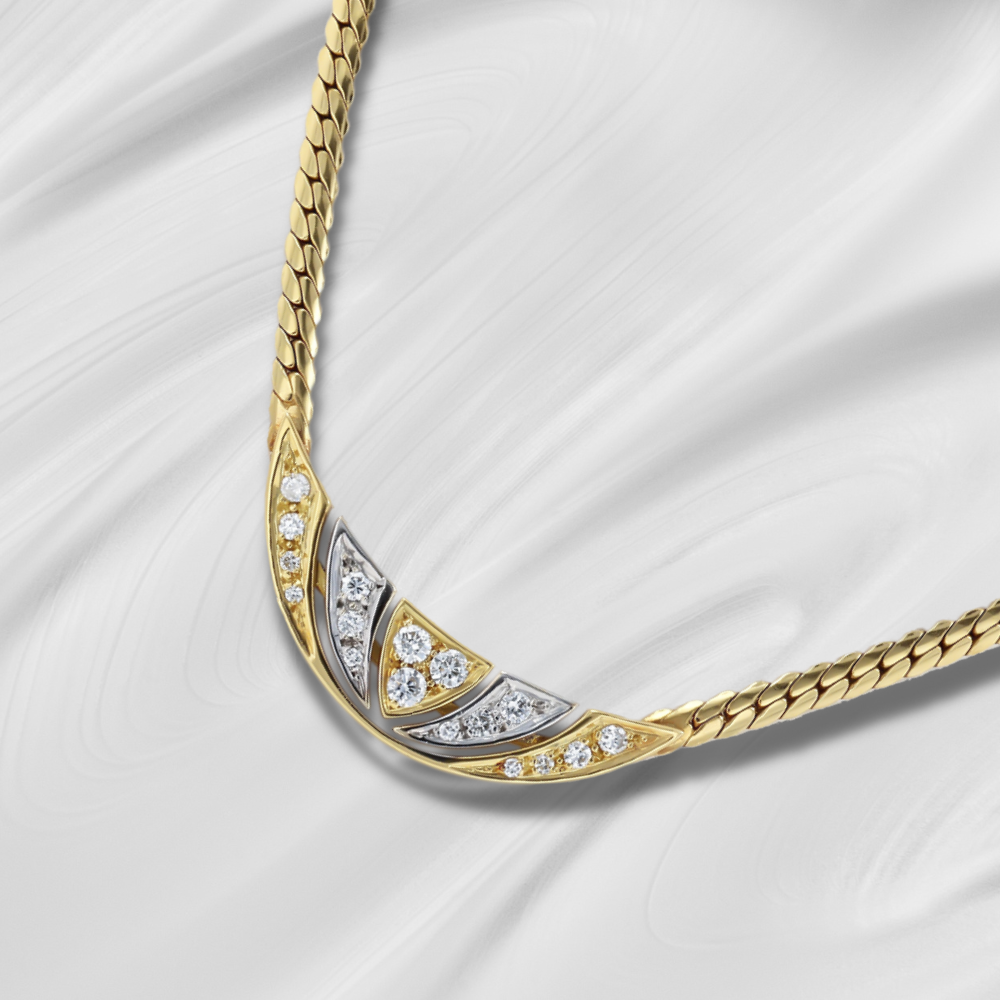

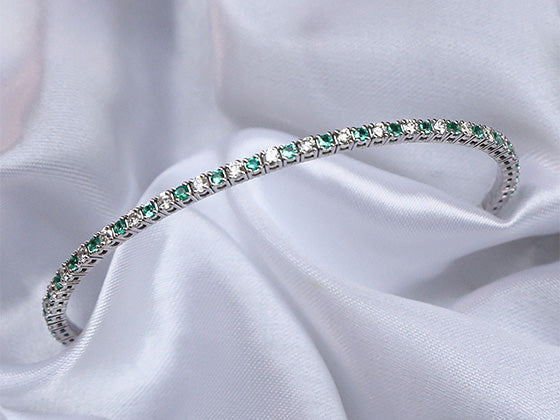

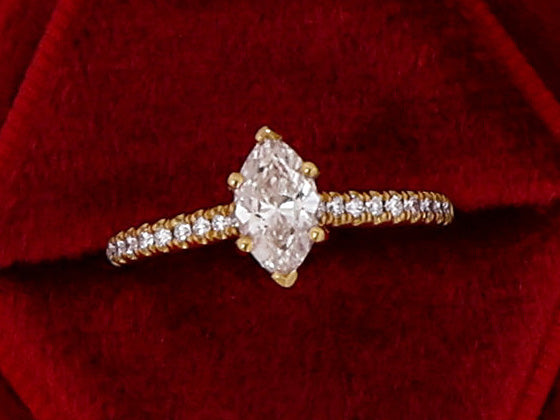
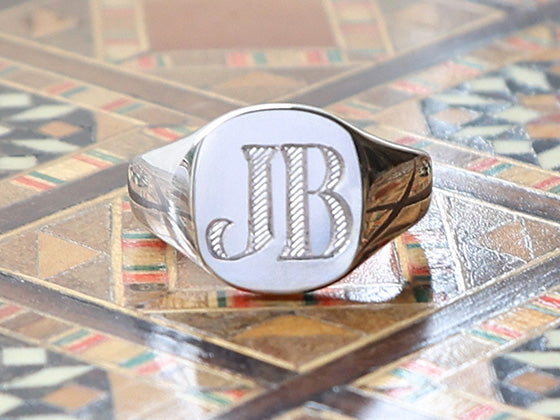
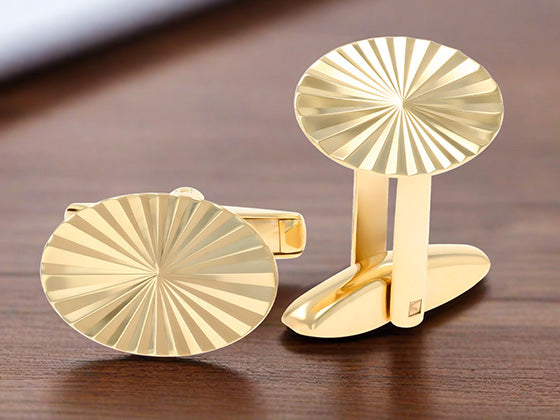
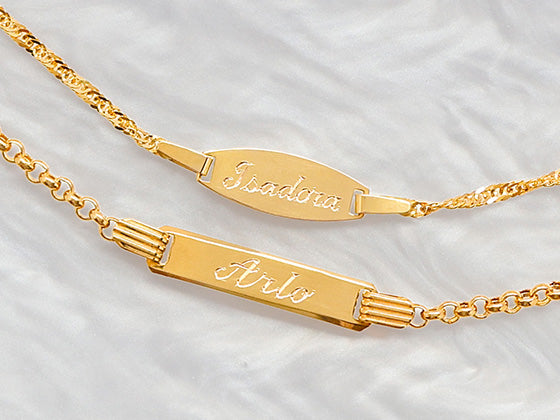
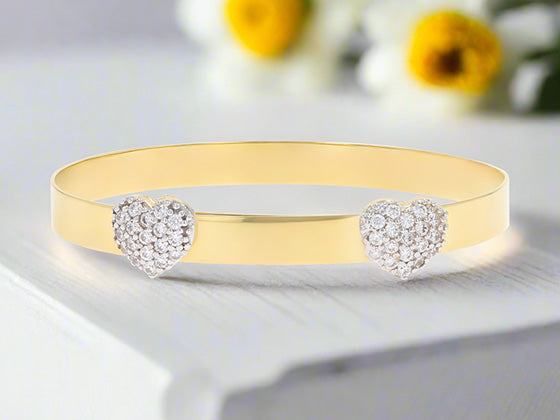
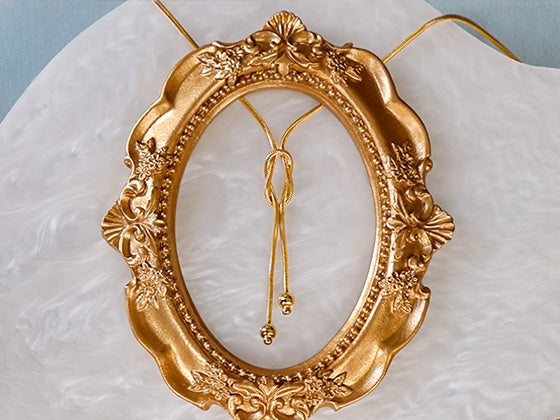
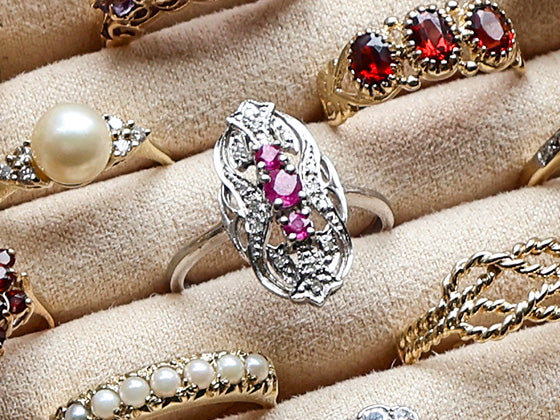
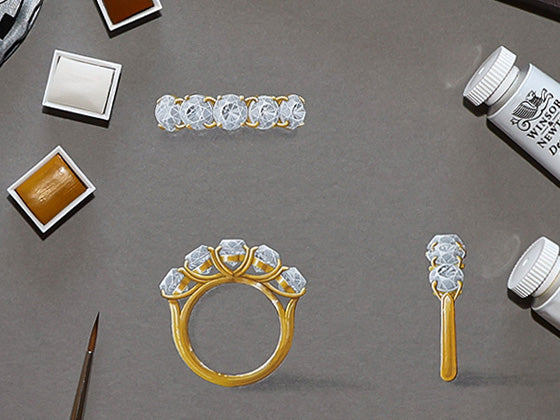
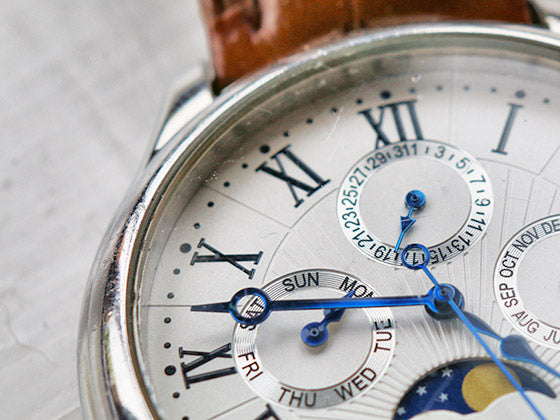
 Contact Us
Contact Us
